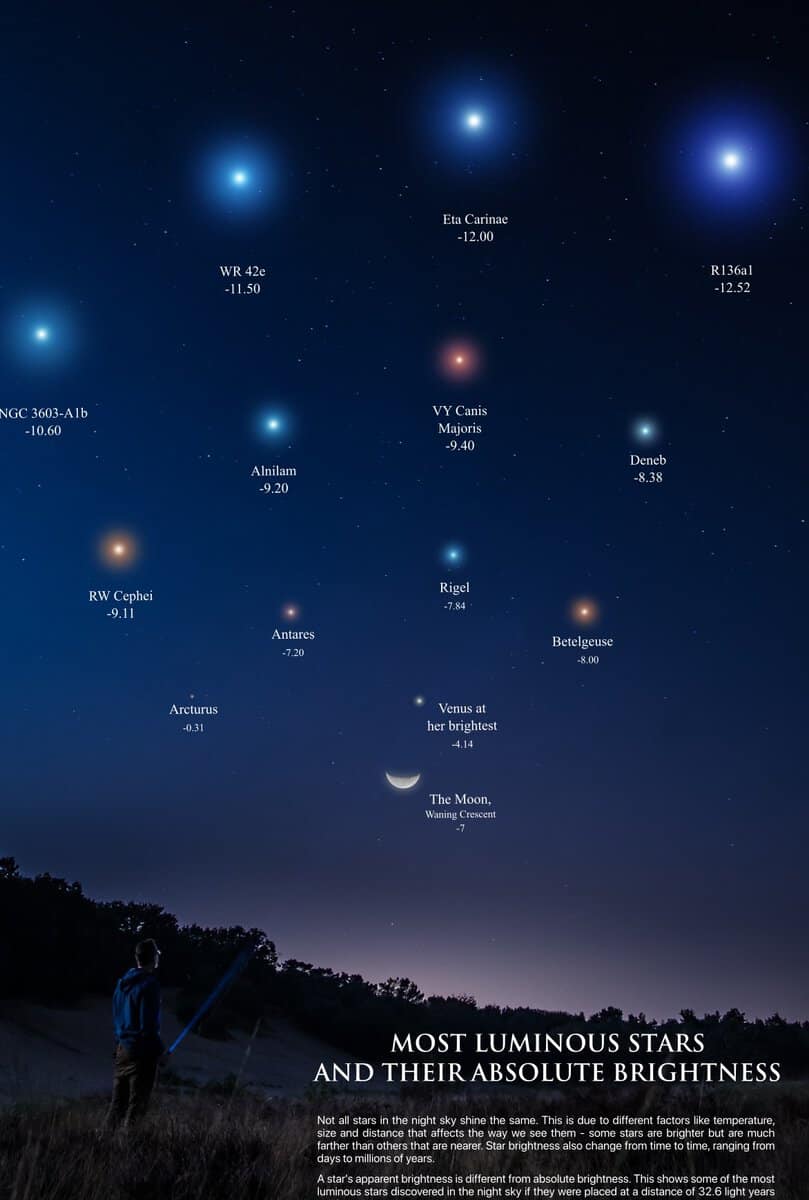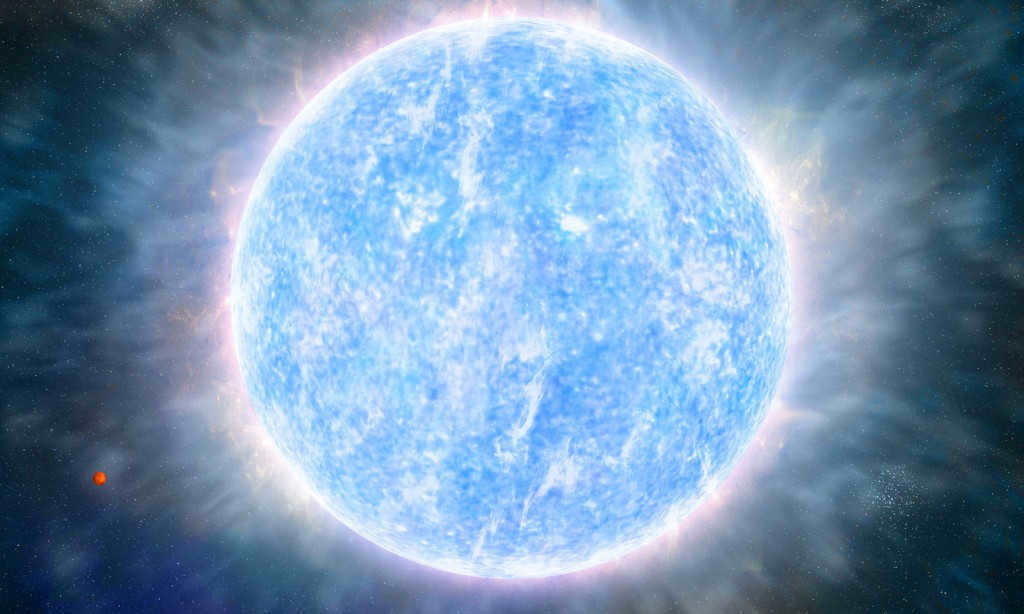
It is a unique occurrence for a solitary celestial body to possess the distinction for multiple characteristics simultaneously. However, there exists a star that has managed to achieve this feat. Presently, it holds the title for the most brilliant star in the entirety of the cosmos – in addition to being the most massive and one of the most scorching. This celestial body is none other than star R136a1.
Unique Characteristics of the Most Brilliant Star
Even though the discovery of this star dates back to the 1960s, it was only recently given its remarkable title in 2010. The reason for this is its astounding distance – the gap between R136a1 and Earth spans 50 thousand parsecs, which is equivalent to a staggering 163 thousand light years!
Therefore, it comes as no surprise that the only telescope capable of observing this star in great detail is the renowned “Hubble”. After all, the brightness of the R136 star cluster in the night sky falls just 10 units below the threshold of visibility for the naked eye. To catch a glimpse of the star itself, a telescope measuring 3.6 meters in length would be required! It’s quite astonishing to think that within such an inconspicuous region from our planet lies the most luminous star in the entire Universe.
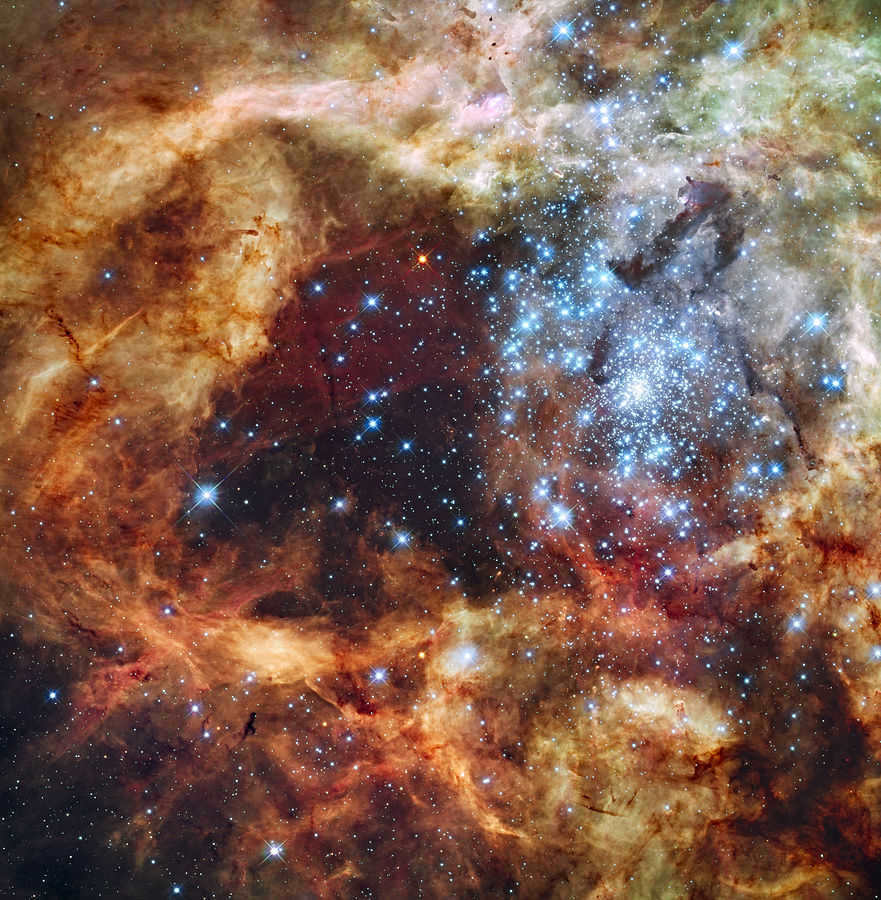
Star cluster R136. Hubble telescope image
However, contemporary astronomers possess both a well-established theoretical foundation for understanding the physics of stars, as well as advanced equipment that enables them to peer into the farthest reaches of the Universe. Consequently, extensive research has yielded a wealth of fascinating information about R136a1, including:
- It is currently the most massive star ever discovered. Mass is a critical parameter for a star, as it dictates the intensity of the thermonuclear “burning” within its core, which serves as the source of all its luminous energy.
- R136a1, with its tremendous mass, boasts an astonishingly high surface temperature of 55 thousand degrees Celsius. This scorching heat is nearly ten times hotter than our own sun! The core of R136a1, where hydrogen fusion is still occurring, can even reach temperatures in the hundreds of millions of degrees Celsius.
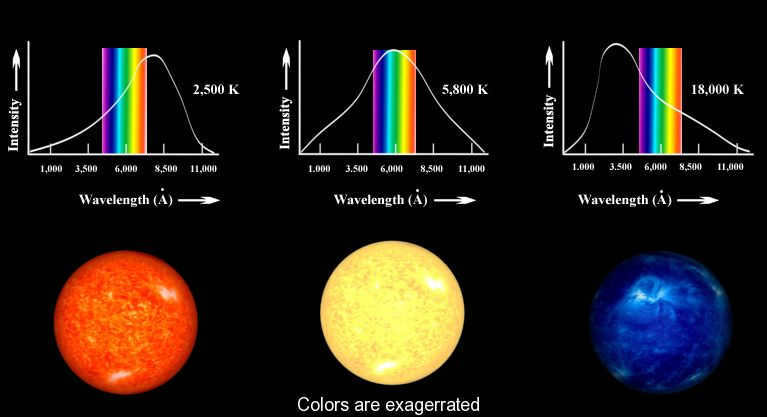
The star’s color is determined by its temperature and the wavelength of light it emits. These colors are intensified.
- Despite being the heaviest star, R136a1 is relatively small in size – its diameter is only 29-35 times larger than the sun. However, its radius is still impressive, measuring 1/7th of an astronomical unit, which is the distance from the sun to Earth. Additionally, the total volume of R136a1 is 22 thousand times larger than our own sun!
- This star is classified as a young luminary in the universe, with astronomers estimating its age to be around 1.7 million years.
Due to its considerable mass, intense brightness, glowing exterior, and powerful stellar winds, R136a1 is categorized as a Wolf-Rayet type star. The inclusion of this star in this classification is also attributed to its composition, which is abundant in heavy elements, specifically oxygen, carbon, and nitrogen. Nevertheless, R136a1 deviates slightly from the typical characteristics of a VR star. The majority of stars in this class are aging massive stars in which thermonuclear “burning” has transitioned to helium. However, hydrogen-based nuclear fusion is still occurring within R136a1.
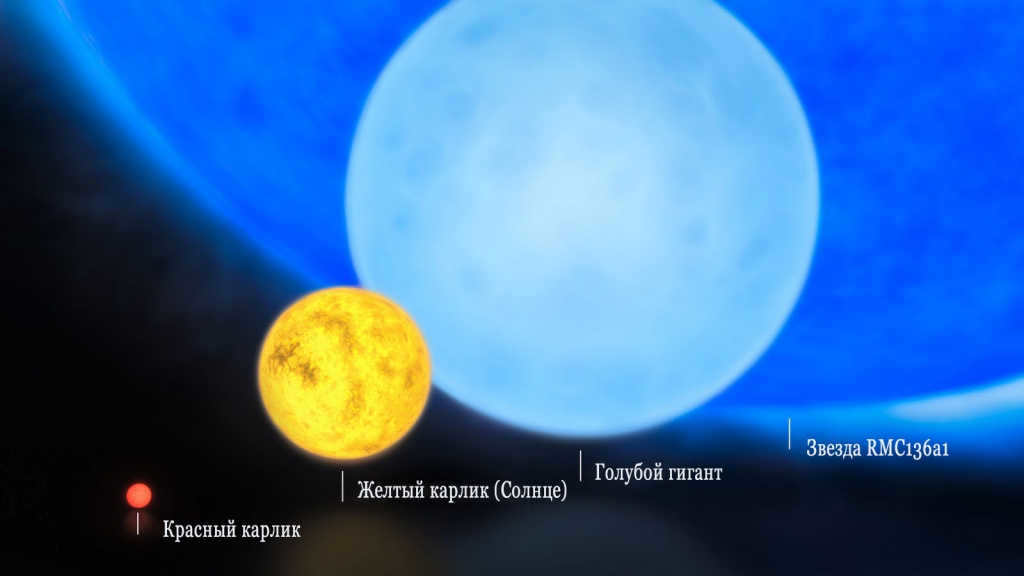
A red dwarf, a star similar to our Sun, a massive blue star, and a specific star known as R136a1
Where can R136a1 be found?
The position of R136a1 in the Universe is also remarkable. As previously mentioned, it is situated within the R136 star cluster, which is concealed within the Tarantula Nebula. All of these celestial bodies are located within the Large Magellanic Cloud, a smaller galaxy that revolves around our Milky Way. The distance from Earth to the nebula is 50 thousand parsecs – equivalent to 1.54 × 10 18 kilometers.
The Tarantula Nebula, situated near the Goldfish constellation, can be found in the Southern Hemisphere. Unfortunately, it is not visible from our location, which is a shame considering the abundance of captivating celestial objects within it. One such object is the red supergiant WOH G64, which ranks among the largest stars ever observed in the vast expanse of the universe.
R136a1, with its remarkable luminosity, holds significant influence within its region. It is responsible for a tenth of the ion fluxes within the Tarantula Nebula and contributes to half of the overall radiation emitted by its star cluster. Achieving such power would necessitate the combination of energies from 70 typical blue stars.
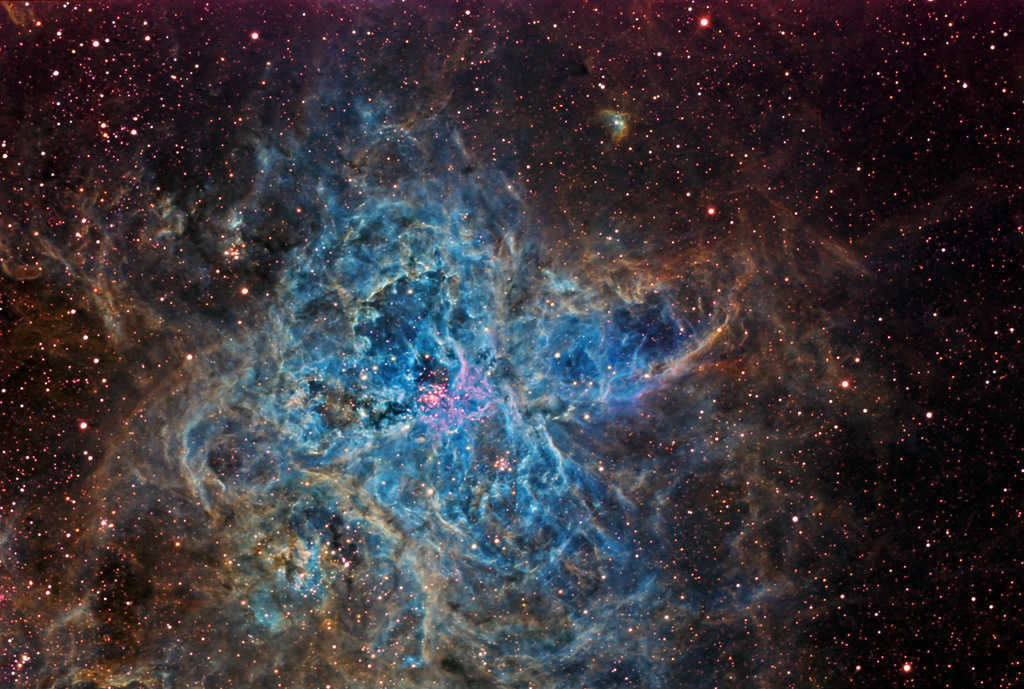
Unprecedented luminosity
R136a1 is renowned for its extraordinary luminosity – its absolute brightness surpasses all other stars, reaching a staggering 8.7 million times that of our Sun! In just 5 seconds, R136a1 emits the same amount of energy that our Sun produces in an entire year!
It is important to emphasize that a star’s overall luminosity is not solely determined by the visible spectrum of light perceived by the human eye.
Resources about the subject
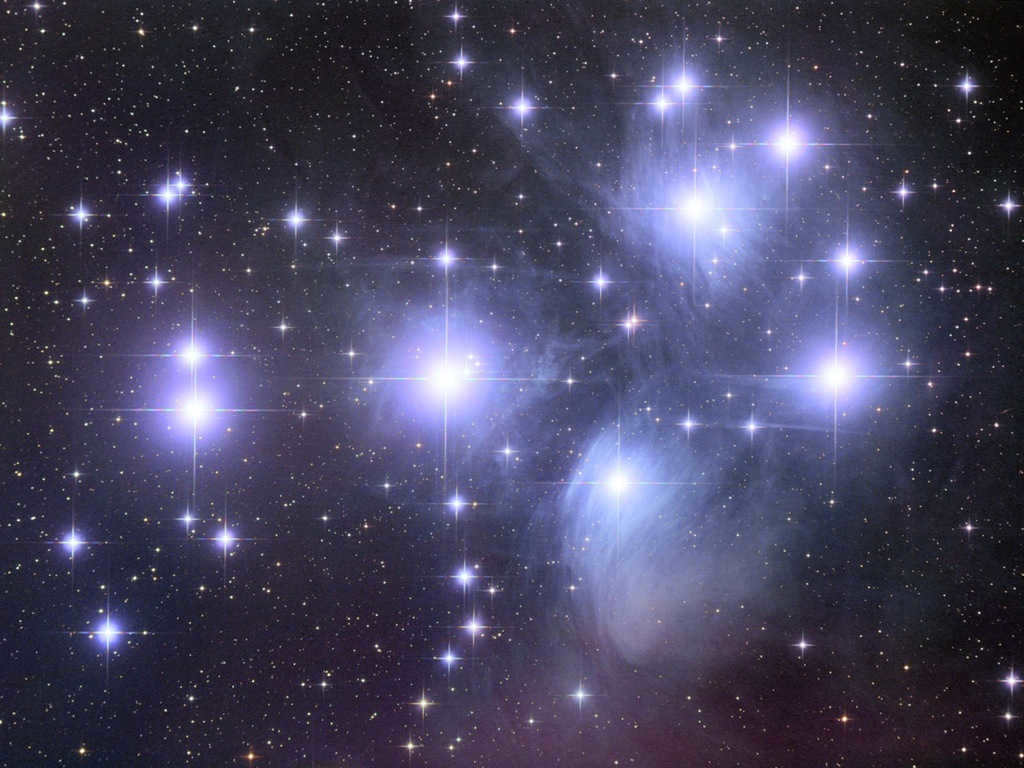
R136a1 has a bolometric absolute magnitude of -12.5, taking into account all the ranges of emission, including the invisible ones. In the visible range, its absolute magnitude hovers around -7.4. However, even in the visible spectrum, R136a1 shines brighter than our Sun. If this extraordinary star were to replace our Sun in the solar system, it would appear twice as large in the sky and nearly 100,000 times brighter. Even from a distance of ten parsecs, R136a1 would still be as large as half the Moon in the night sky.
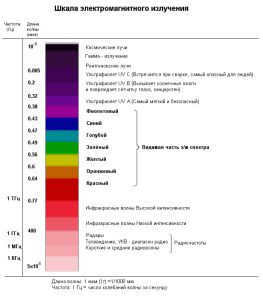
Numbers may be just numbers, but have you ever wondered what a high luminosity really means? Let’s use our own planetary system as a case study. If the Sun’s radiation were to increase by just ten percent, life on Earth would only be sustainable at the poles. And if the brightness were to increase by a staggering forty percent, our planet would start to resemble Venus. Now, imagine the impact of the radiation emitted by R136a1, which is hundreds of thousands of times more powerful than the Sun’s radiation, on our fragile planet.
However, we failed to consider the radiation spectrums that are not visible to the human eye, as mentioned earlier, which actually make up 99% of the luminosity of the massive star. The giant star R136a1 emits the most energy in the form of ultraviolet and X-rays. This is a result of the star’s high temperature, which gives the surface of the star a rich blue hue. The wavelength of the light emitted from such an environment is extremely short, so short that it falls outside the visible range. Cooler stars, on the other hand, exhibit colors such as white, yellow, and red.
The discovery and exploration of the star
The star known as R136a1 has been a hidden gem due to its immense distance from Earth. While the Large Magellanic Cloud has been observed for over 500 years, and the Tarantula Nebula was identified in 1751, it wasn’t until 1979 that the R136a cluster was discovered. This momentous finding was made possible by the use of the colossal 3.6-meter ESO telescope in Chile.
The extraordinary brightness of this celestial sector immediately captured the attention of astronomers. It was clear that typical stars, no matter how luminous, could not account for such an immense amount of energy. The remarkable luminosity of the R136a cluster led some astronomers to speculate about the existence of a star with a mass up to 3000 times that of our sun. While this may have seemed improbable before the advent of orbiting telescopes, it was a logical explanation given the circumstances.
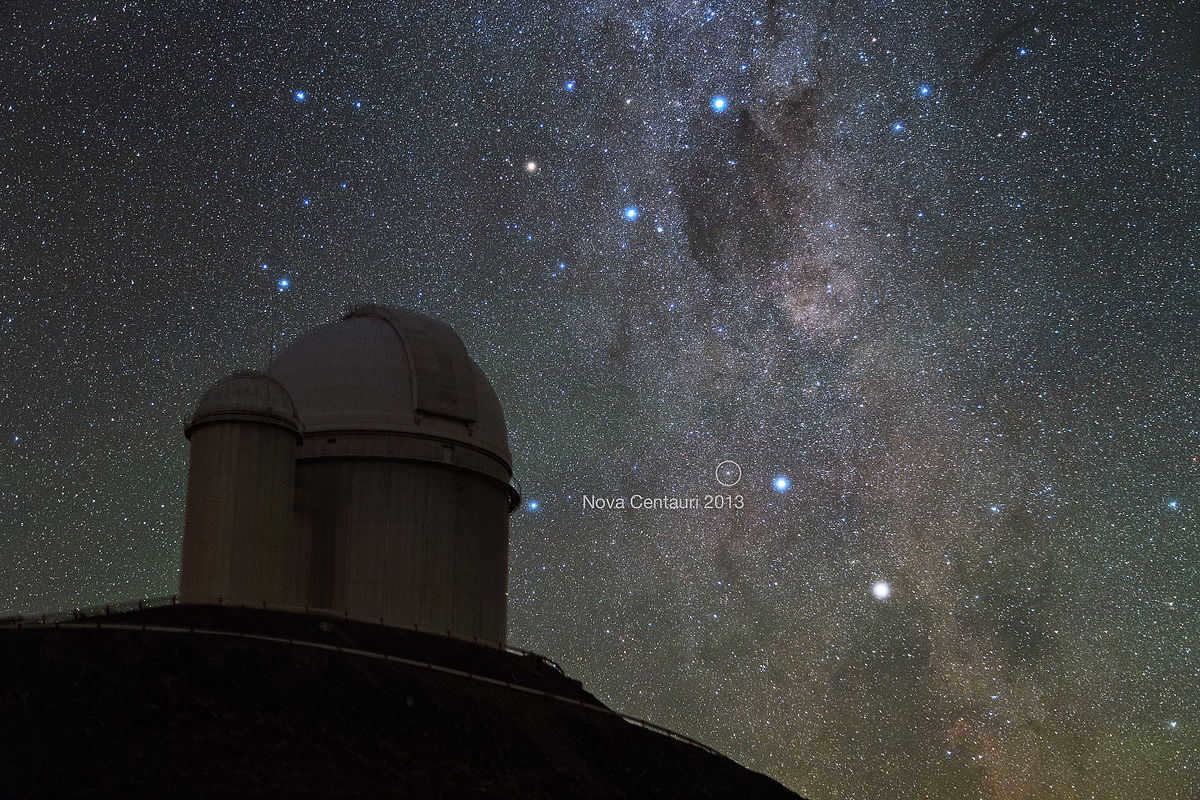
It was not until the 1990s that R136a1 could be distinguished from the other stars in the cluster, thanks to the orbiting telescope “Hubble”. However, it was not until 2010, after conducting a thorough survey of the star cluster, that the star’s record-breaking mass and luminosity were discovered. Prior to that, the star went unnoticed against the backdrop of other luminaries due to constant intersections with other cosmic objects.
Consequences of the High Luminosity
It is evident even to a beginner in the field of astronomy – the amount of energy emitted by R136a1 is extraordinarily high. It is so immense that it disrupts various physical interactions that maintain equilibrium, causing the star to become highly unstable.
As a result, R136a1 will not hold the title of the heaviest star for long – at least in the cosmic context. The star’s radiation and temperature are so intense that they overpower the gravitational force that holds R136a1’s matter together. This leads to the formation of powerful stellar winds, reaching speeds of up to 2,500 kilometers per second. Every year, R136a1 loses 0.0005 solar mass – a billion times more than our own sun! However, this significant loss is not solely due to the solar wind: the majority of the mass is lost through other means.
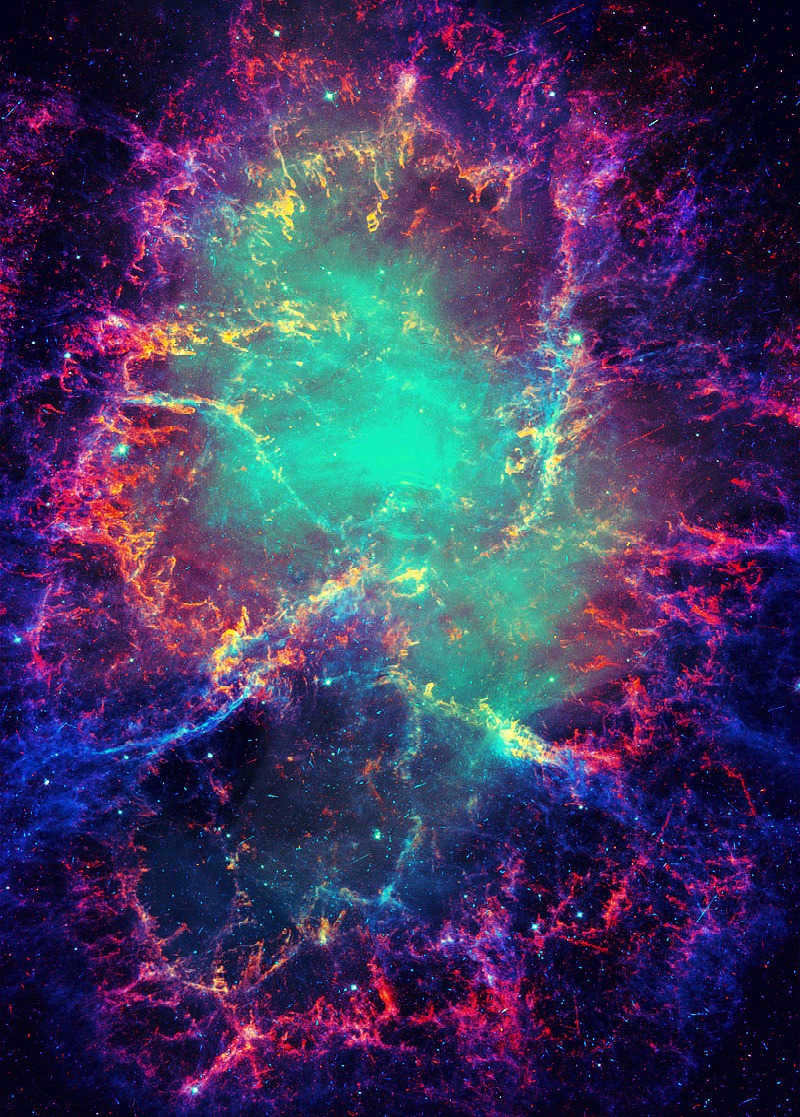
The transport of energy from the interior to the exterior of a star is influenced by its mass and the level of radiative power. In the case of massive stars, radiation is carried from the core to the surface through a process known as convection, where hotter material is moved upwards. This process is similar to how water boils. However, due to the extremely high energy of R136a1, convection causes helium and nitrogen atoms to be pulled from the core and ejected outward as prominences and solar wind. As a result, the spectrum composition of R136a1 is similar to that of Wolf-Rayet stars, despite their different actual composition and physical processes.
The dim future of the most brilliant star
By performing a basic calculation, it becomes evident – over its 1.7 million years of existence, R136a1 has shed material equivalent to the weight of 50 Suns. If this trend continues, the star will persist in its current state for an additional 2 million years, diminishing in size to around 70-80 solar masses.
However, the situation is not as straightforward as it initially appears. Scientists make projections about the evolution of stars based on observations of the Sun and nearby luminaries. It is important to note that astronomers excel at forecasting future developments, particularly when it comes to Main Sequence stars or typical giants.
Resources related to the subject
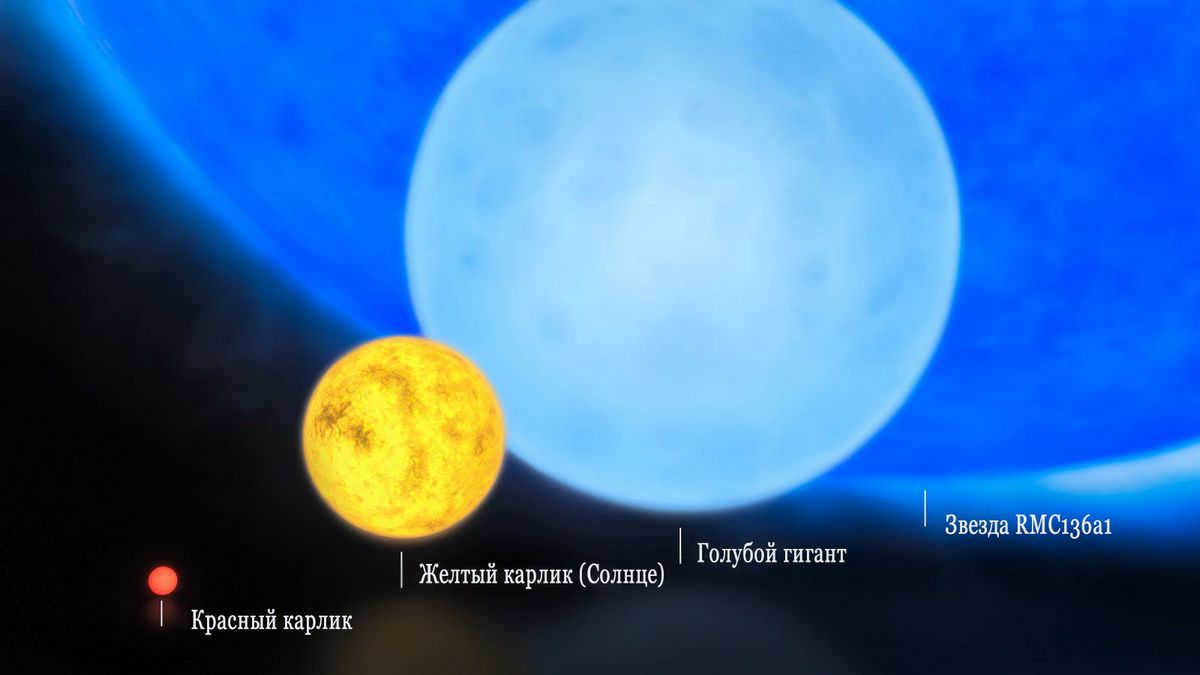
However, this method does not apply to R136a1 – this type of massive star is unprecedented in the field of astronomy. It is not just the size that is significant, exceeding the limit for natural star formation – that is, the accumulation of material from the nebula. The intensity of R136a1’s radiation is literally causing it to disintegrate. Astronomers propose that R136a1 could only have formed through the merging of two or more smaller stars – which is why the R136 cluster is considered extremely dense.
As a result, scientists in the field of astrophysics can only make educated conjectures regarding the future progression of the star. Nevertheless, based on their current understanding, it is certain that R136a1 will eventually undergo a supernova explosion as it nears the end of its lifespan. This is due to the fact that any star that has undergone helium ignition and formed a substantial core comprised of carbon, oxygen, and other heavier elements cannot simply evade the gravitational forces and transform into a gradually cooling mass, such as a white dwarf. The immense amount of energy accumulated within the star must find a way to dissipate.
As our audience may already be aware, following a supernova event, the celestial body undergoes a transformation, either becoming a neutron star or a black hole. In the case of R136a1, due to its core composition containing not only carbon-oxygen but also iron, it is destined to become a black hole. The remnant mass of R136a1 will far exceed the upper limit for a neutron star. Typically, the transition into a black hole takes place without a visible explosion. However, due to its tremendous size, R136a1 will have the capability to expel a significant quantity of the nickel isotope 56 Ni. As a result, a burst of immense brightness, known as a hypernova, will occur – this extraordinary event will be observable even from our planet Earth.
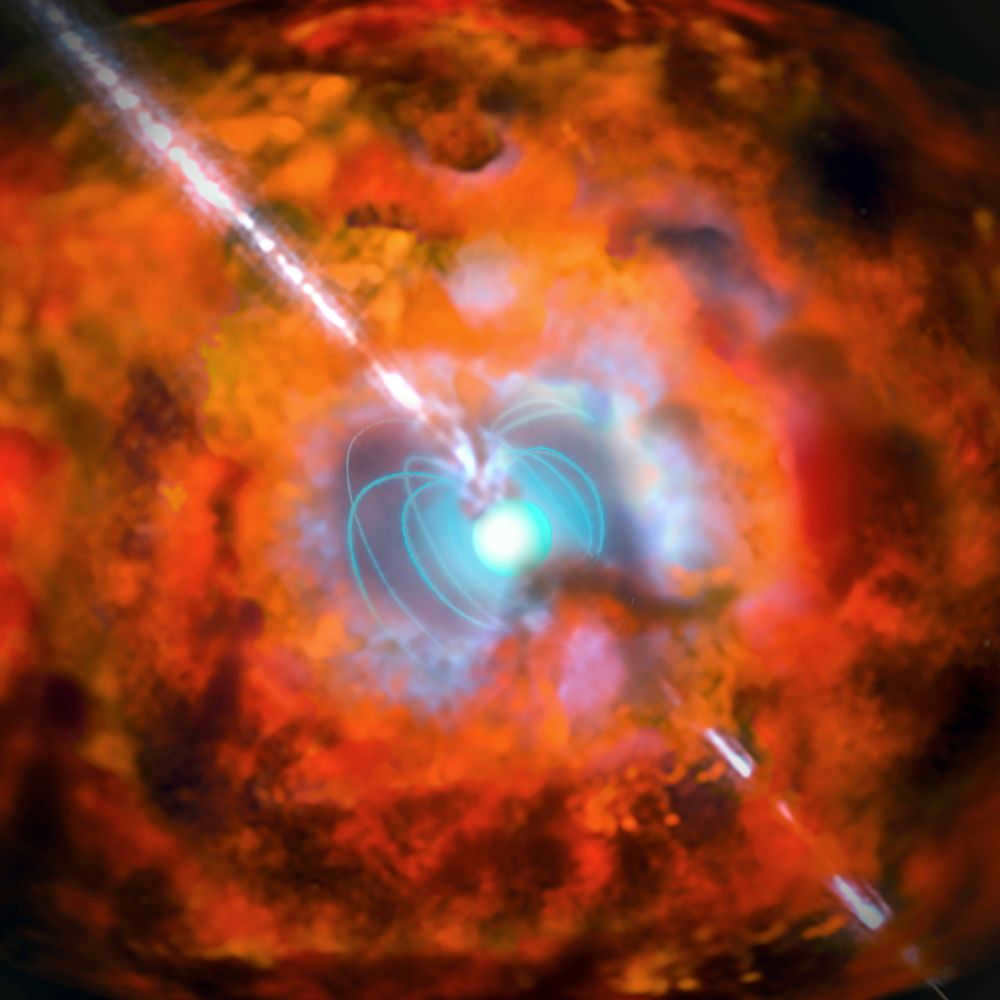

An artistic representation of a hypernova
Luckily, this hypernova will occur at a safe distance from our planet. A similar explosion happened 450 million years ago, but it was 6,000 light-years away and had devastating effects on the creatures living on Earth. This event is known as the Ordovician-Silurian extinction event.
What is the brightest star in the sky? It’s not a straightforward question. The answer depends on how we define “brightest.”
If we’re talking about the brightest star visible to the naked eye, that’s one thing.
But if we’re considering the amount of light a star emits, that’s another story. Because the brightest star in the sky might only appear so bright because it’s closer to us than larger, brighter stars.
So when we talk about the brightest star in the sky, we need to differentiate between apparent and absolute brightness. These are known as apparent and absolute stellar magnitudes.
Apparent stellar magnitude refers to the brightness of a star in the night sky as observed from Earth.
Absolute stellar magnitude is a measure of a star’s brightness from a distance of 10 parsecs.
The most luminous celestial body in the atmosphere
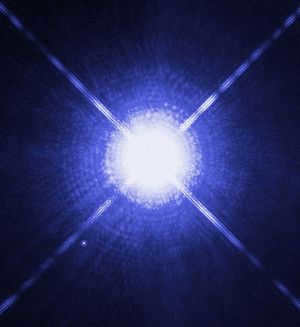
Sirius, located in the Big Dog constellation, holds the title of being the most brilliant star in the night sky. Its apparent stellar magnitude is -1.46 m, and it has an absolute magnitude of 1.4 m. Interestingly, Sirius is a binary star system consisting of Sirius A, a larger and brighter star that is twice the mass of our Sun, and Sirius B, a dim white dwarf. If you look at a photo of Sirius captured by the Hubble telescope, you can clearly see Sirius A as the prominent star, with Sirius B appearing as a small white dot to the lower left. Due to its remarkable brightness, Sirius occupies a significant position in the perception of the celestial sphere by many people.
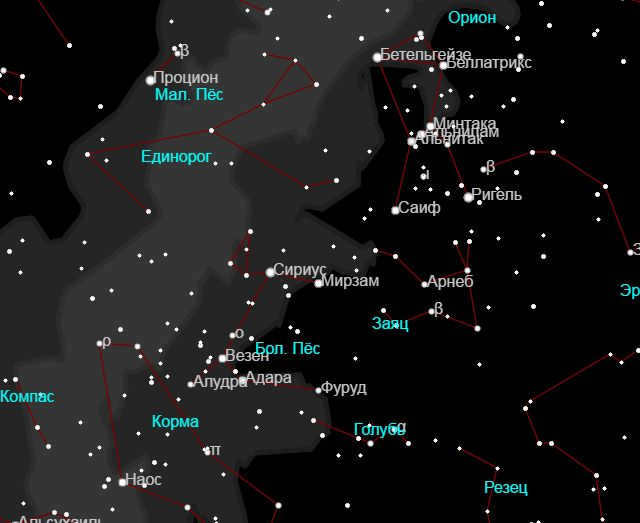
If you are wondering about the location of Sirius, it can be easily found. The best time to locate it is during winter as it is not visible in summer. To begin, locate the constellation Orion which is known for its distinctive “Orion belt” consisting of three stars. Once you have found Orion, face the constellation and look for the brightest star below and to the left of it. If you need assistance, refer to a map for guidance.
Brightest star in the northern hemisphere
The most luminous star in the sky of the northern hemisphere is Arcturus. It holds the title of being the brightest star in the Volopassus constellation.
While Arcturus shines brightly in the Northern Hemisphere, it ranks as the fourth brightest star in the overall sky.
The top three positions are taken by Sirius, Canopus, and Alpha Centauri, which grace the Southern Hemisphere of the celestial sphere.
The most luminous star in the Cosmos
The most radiant star in the cosmos is the R136a1 star. Situated within the R136 cluster nestled in the Tarantula Nebula, also referred to as NGC 2070.
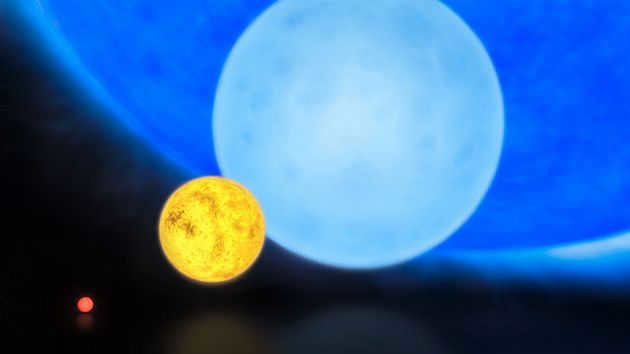

The star R136a1 is an exceptional member of the stellar community. It falls into the exclusive category of blue hypergiants. The red dot represents a red dwarf star, while the yellow circle symbolizes our sun. Additionally, the blue dot signifies a blue dwarf star. In the background, we can observe a segment of the stellar circle belonging to R136a1.
This star boasts an impressive radius, measuring 36 times that of our sun.
With a mass of 265 solar masses, R136a1 holds a prominent position in the cosmos.
Notably, the apparent stellar magnitude of the brightest star in the Universe is 12.77 m, while the absolute stellar magnitude of this colossal giant is -12.5 m.
Last but not least, the luminosity of R136a1 is equivalent to the radiance emitted by 8,700,000 suns!
It is worth mentioning that although R136a1 shines brightly in our sky, it is still outshined in size by the UY Shield star, which is currently recognized as the largest known star.
The human eye is barely capable of distinguishing stars with a magnitude of 7 in a pitch-black sky. However, it is commonly accepted that stars up to magnitude 6 are visible, accounting for artificial sky brightness and the average visual acuity of observers.
Unfortunately, the Tarantula Nebula is situated in the Large Magellanic Cloud, which cannot be seen from Russia. Furthermore, the star R136a1 is located 165000 light years away, making it invisible to the naked eye. However, individuals south of 20° north latitude with a telescope with a diameter of 150mm or greater can attempt to observe this largest known star in the Universe according to current scientific knowledge. Here are its coordinates (epoch J2000): Direct Ascension: 05h 38m 42.43s. Declination: -69° 06′ 02.2″.
Names of the most luminous stars
Presented below are the names of the top 20 most brilliant stars observable to the human eye in the night sky.
The roster of the brightest stars is arranged in a descending order based on their apparent stellar magnitude.
| No. | Name | Distance, light years | Spectral class | Celestial hemisphere | Visibility in Russia | ||
| 0 | Sun | 0.0000158 | −26.72 | 4.8 | G2V | Everywhere | |
| 1 | Sirius (α of the Great Dog) | 8.6 | −1.46 | 1.4 | A1Vm | South | Except in the far north |
| 2 | Canopus (α Kiel) | 310 | −0.72 | −5.53 | A9II | South | Not visible |
| 3 | Toliman (α Centauri) | 4.3 | −0.27 | 4.06 | G2V+K1V | South | Not visible |
| 4 | Arcturus (α Volopassus) | 34 | −0.04 | −0.3 | K1.5IIIp | North | Everywhere |
| 5 | Vega (α Lyra) | 25 | 0.03 (rm) | 0.6 | A0Va | North | Everywhere |
| 6 | Capella (α of Ascendant) | 41 | 0.08 | −0.5 | G6III + G2III | North | Everywhere |
| 7 | Rigel (β Orion) | ~870 | 0.12 (perm) | −7 | B8Iae | South | Everywhere |
| 8 | Procyon (α of the Lesser Dog) | 11.4 | 0.38 | 2.6 | F5IV-V | North | Everywhere |
| 9 | Ahernar (α Eridanus) | 69 | 0.46 | −1.3 | B3Vnp | South | Not visible |
| 10 | Betelgeuse (α Orion) | ~530 | 0.50 (perm) | −5.14 | M2Iab | North | Everywhere |
| 11 | Hadar (β Centauri) | ~400 | 0.61 (perm) | −4.4 | B1III | South | Not visible |
| 12 | Altair (α of Eagle) | 16 | 0.77 | 2.3 | A7Vn | North | Everywhere |
| 13 | Acrux (α of the Southern Cross) | ~330 | 0.79 | −4.6 | B0.5Iv + B1Vn | South | Not visible |
| 14 | Aldebaran (α Taurus) | 60 | 0.85 (rem) | −0.3 | K5III | North | Everywhere |
| 15 | Antares (α Scorpio) | ~610 | 0.96 (perm) | −5.2 | M1.5Iab | South | South, partly mid-latitudes |
| 16 | Spica (α Virgo) | 250 | 0.98 (perm) | −3.2 | B1V | South | Except Arctic Ocean islands |
| 17 | Pollux (β Gemini) | 40 | 1.14 | 0.7 | K0IIIb | Northern | Everywhere |
| 18 | Fomalgaut (α of South Pisces) | 22 | 1.16 | 2.0 | A3Va | South | South, partly mid-latitudes |
| 19 | Mimosa (β of Southern Cross) | ~290 | 1.25 (perm) | −4.7 | B0.5III | South | Not visible |
| 20 | Deneb (α of the Swan) | ~1550 | 1.25 | −7.2 | A2Ia | North | Everywhere |
What Causes Variation in the Brightness of Stars?
When we look up at the night sky, we are mesmerized by the multitude of stars, each shining with its own brilliance. However, have you ever wondered why some stars appear brighter than others? To answer this question, we must delve into the life cycle of these celestial bodies.
When a star is born, it is primarily composed of hydrogen. The size of the star determines the likelihood of a nuclear fusion reaction taking place, resulting in the formation of helium.
As a star’s mass increases, its core becomes increasingly hotter. The most massive stars have relatively short lifespans, as they quickly deplete their hydrogen fuel in the core. Subsequently, these stars begin to burn heavier elements, causing them to expand and transform into gigantic entities. At this stage, the brightness of the star significantly intensifies.
The apparent stellar magnitude (m) is the unit of measurement used to determine the brightness of stars. It represents the brightness of a star as observed from Earth. A lower magnitude indicates a brighter star.
A glimpse at the most luminous stars in the celestial sphere
| Nomination | place | name | Visible magnitude |
| Ranking of the brightest stars in the sky | 15 | Antares | 0.96 (rem) |
| 14 | Aldebaran | 0.85 (PEREM) | |
| 13 | Akruks | 0.77 (PEREM) | |
| 12 | Altair | 0.77 (PEREM) | |
| 11 | Hadar | 0.61 (PEREM) | |
| 10 | Betelgeuse | 0.5 (PEREM) | |
| 9 | Ahernar | 0.46 (PEREM) | |
| 8 | Procyon | 0.38 (PEREM) | |
| 7 | Rigel | 0.12 (PEREM) | |
| 6 | Capella | 0.08 (PEREM) | |
| 5 | Vega | 0.03 (PEREM) | |
| 4 | Arcturus | -0.05 (PEREM) | |
| 3 | Alpha Centauri | -0.27 (PEREM) | |
| 2 | Canopus | -0.72 (PEREM) | |
| 1 | Sirius | -1.46 (PEREM) |
Antares – a celestial body
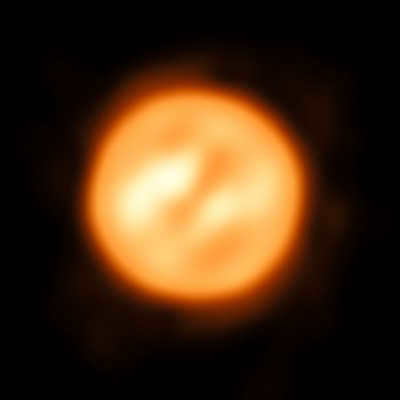
With a visible magnitude of 0.96 (perm), Antares is not only the brightest star in the Scorpius constellation, but also one of the Red Giants within the Milky Way. What sets Antares apart is its distinct red glow when observed in the night sky. Its name, Anti-Ares, refers to it being the antipode of Mars. This unique and radiant star has captivated ancient civilizations, with the Chinese considering it one of the most influential stars and the Persians associating it with royalty.
Antares, located 600 light years away from Earth, is an extraordinary celestial body. When compared to our Sun, this megagiant surpasses it in numerous aspects. Its size is a staggering 800 times bigger, its diameter is 400 times larger, and its brightness is a whopping 65000 times brighter. Despite these impressive characteristics, Antares’ mass is only 17 times greater than that of the Sun. This observation suggests that the star’s matter has a remarkably low density. The best time to observe Antares, especially when it is positioned against the Sun, is during the month of May. The existence of a companion star to Antares was first discovered in 1813. However, due to the immense brightness of its primary star, the companion star is challenging to observe. Nevertheless, it is considered a sizable star with a magnitude of 5 and is 170 times brighter than the Sun.
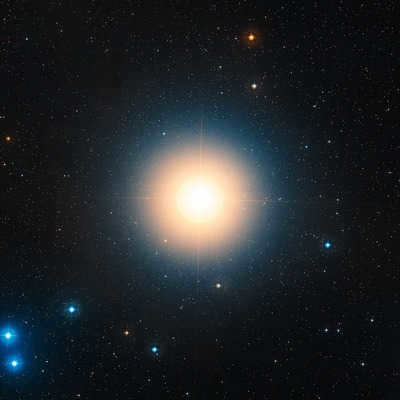
Visible magnitude: 0.85 (rem)
When observed from the planet Earth, Aldebaran appears to be connected to the Hyades star cluster (consisting of 4 stars that are bound together by gravity). Together they form a shape resembling the letter V, but their association is purely optical: Aldebaran is actually a solitary star. However, it is not entirely alone: orbiting around it is a red dwarf – a small companion that is so faint that it cannot be detected without specialized equipment. The closest “neighbors” (excluding the companion star) are located 20 light-years away from Aldebaran.
The Arabs gave the name “Aldebaran” to this star, which means “follower” in translation. However, this colossal celestial body is known by other names as well: the Romans referred to it as Palilius, while the Dreki people called it Lamparus. On occasions, Aldebaran is also referred to as the “Bull’s Eye”. This star is classified as a normal giant and emits a radiant orange light. It is situated at a distance of 65 light years from our planet. The giant star is 44 times larger than our sun and possesses 150 times more power. Scientists have determined that Aldebaran has already exhausted all of the hydrogen on its surface and is currently undergoing the process of helium destruction, resulting in a significant increase in its size. This celestial spectacle can be observed in the sky during the winter months.
Akruks
Akruks is a unique platform that provides a wide range of services. Akruks offers a variety of solutions for individuals and businesses alike. With its innovative technology and dedicated team, Akruks is able to deliver high-quality results. Whether you need assistance with web development, graphic design, or digital marketing, Akruks has got you covered. You can trust Akruks to help you achieve your goals and take your business to the next level. So why wait? Explore the possibilities with Akruks today.
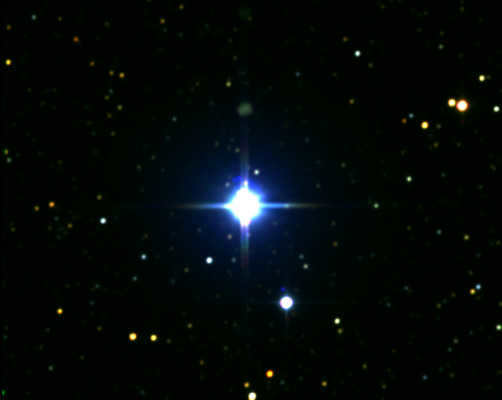
Image Source: No machine-readable author provided. Alain r assumed (based on copyright claims)., CC BY-SA 3.0
"Polaris" is the most luminous star in the Southern Cross constellation, and it is one of the few stars in the night sky that does not have a mythological name. Its name is derived from the Latin name of the constellation itself, which is “crux”. Alpha Crux is also known as A-Crux. Recent observations have revealed that Akruks is not just a single star, but rather a constellation consisting of three celestial bodies.
Altair
Rewrite the text, making it unique and using the English language, while preserving the HTML markup:
Altair
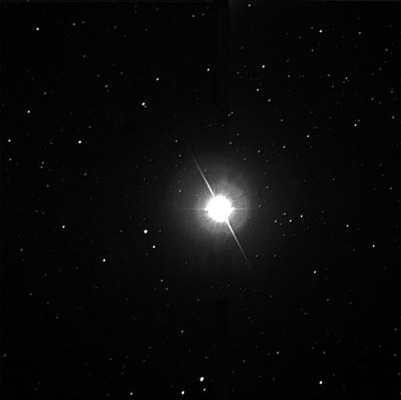
Picture: NASA/JPL/Caltech/Steve Golden, public domain, via Wikimedia Commons
With the invention of a high-resolution telescope, scientists have been able to study a star that has a fast motion, causing it to appear elongated along its equator. Altair is a star that is hot and white, and it has a non-spherical shape. It wasn’t until 2007 that Altair was first photographed. Altair is one of the closest stars to Earth and is part of a constellation known as the Eagle Family. The distance from Earth to Altair is just 16.8 light years. Altair is one of the prominent stars in the “summer-fall triangle” and can be seen during the summer and fall in the Northern Hemisphere.
To comprehend the magnitude of Altair’s velocity, one only needs to juxtapose it with the velocity of the Sun: while the Sun completes a full orbit in 25.05 days, Altair accomplishes the same feat in a mere 8.9 hours. Investigations carried out in the 2000s proposed that due to its rapid rotational speed, the equatorial regions of Altair experience reduced gravity and temperature. Additionally, the brightness of Altair’s equator is comparatively dimmer than the rest of the star, a phenomenon referred to as gravitational darkening.
The star Hadar
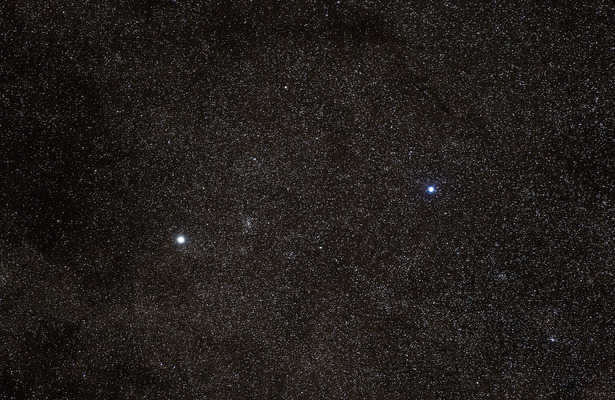
Visible magnitude: 0.61 (rem)
Hadar, a brilliant blue giant, graces the Australian flag as its star. It stands as the second most luminous celestial object in the Centauri constellation and is undeniably one of the most radiant stars in the nocturnal expanse. The distance from Earth to Hadar is nothing short of impressive, spanning 530 light years. Hadar, or Hadar-A, consists of two stellar twins that orbit each other at a distance of 3 astronomical units (equivalent to 150 million kilometers). These cosmic entities are considered ancient, with an estimated age of at least 12 million years. Both stars boast a remarkable mass, which varies from 11 to 133 times that of our Sun, depending on the source.
This star is only visible in the night sky of the Southern Hemisphere. Recent findings indicate that Hadar-A is undergoing expansion. Certain astronomers posit that this expansion will ultimately cause the twins to evolve into supergiants and, eventually, result in their explosion as supernovae.
Betelgeuse
Betelgeuse is a red supergiant star in the constellation of Orion. It is one of the largest and most luminous stars visible to the naked eye. Betelgeuse is located approximately 640 light-years away from Earth and has a radius about 1,000 times that of our Sun. It is nearing the end of its life and is expected to explode as a supernova within the next million years. When it does, it will briefly outshine the rest of the stars in the galaxy. Betelgeuse has been a subject of fascination for astronomers and stargazers alike, and its unique properties make it a captivating object of study.
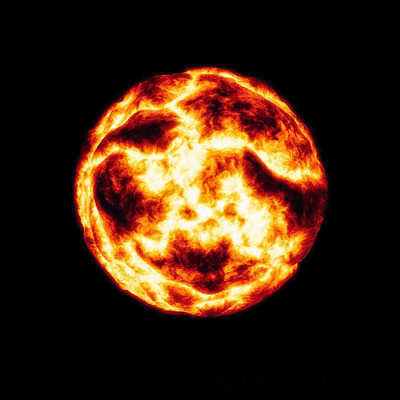
Visible magnitude: 0.5 (rem)
Based on certain reports, there is a possibility that this colossal enormous star may reach its final moments soon, resulting in an extraordinary superflare and the creation of a Crab Nebula with an undetectable star or black hole at its core. The challenge lies in the fact that predicting this occurrence is currently impossible, as astronomy is a relatively nascent field of study and Betelgeuse remains a mysterious and relatively unexplored celestial body. This is hardly surprising, considering its inconceivable distance from our planet: according to some estimates, it is situated approximately 420-650 light years away, while others suggest a distance of up to 1300 light years.
The estimation of the size and mass of this supergiant is fairly average: Betelgeuse’s mass is approximately 17 times that of the Sun, and its radius is between 950 and 1200 times that of the Sun. It is definite that the star is not part of any close cluster and is not a binary system. Will there be a supernova explosion? Scientists do not have reliable knowledge on this matter. What they do know for certain is that the star is in its final stage of evolution, where the amount of carbon and heavy elements is so low that sustaining stable thermonuclear processes is no longer possible.
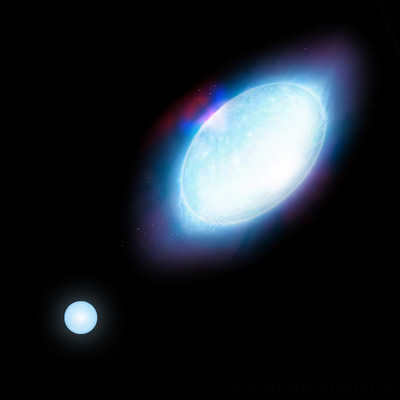
Ahernar is a brilliant star that rotates around its axis at an astonishing speed of 260-310 km/s. It belongs to the constellation Eridanus and is the brightest object in it. Due to its rapid rotation, Ahernar is highly compressed at its poles, giving it an ellipsoidal shape rather than the typical spherical shape. The high rotational velocity also affects the temperature of the star, with the poles reaching temperatures of 20000 K and the equator around 10000 K.
Ahernar has a substantial mass, approximately 8 times that of our Sun. It is located 139 light years away from our planet. This celestial object can only be observed in the southern latitudes. In November, Ahernar can be seen in all its glory, and for those south of 33° north latitude, the star never goes below the horizon. Residents of Asian countries and the equator are fortunate to enjoy its view throughout the year.
The star’s name, Ahernar, is derived from Arabic and means “the end of the river”. It was previously believed to be the last star in the Eridanus constellation (now known to be Akamar).
An intriguing detail is that Ahernar frequently appears in fantasy literature, with at least six mentions of the star found in various fantasy novels.
Procyon
Procyon is a binary star system located in the constellation of Canis Minor. It is one of the closest star systems to Earth, with a distance of just 11.46 light-years. The system consists of two stars, Procyon A and Procyon B, with Procyon A being the brighter and more massive of the two. Procyon A is a yellow-white main sequence star, similar in size and temperature to our Sun. Procyon B, on the other hand, is a faint white dwarf star that is much smaller and cooler. The two stars orbit each other with a period of about 40.82 years. Procyon is also known by its Bayer designation Alpha Canis Minoris and its Flamsteed designation 10 Canis Minoris. It is easily visible to the naked eye and has been known since ancient times. In fact, it is one of the first stars to have its distance measured using the parallax method. Procyon is also a popular target for amateur astronomers due to its brightness and proximity to Earth.
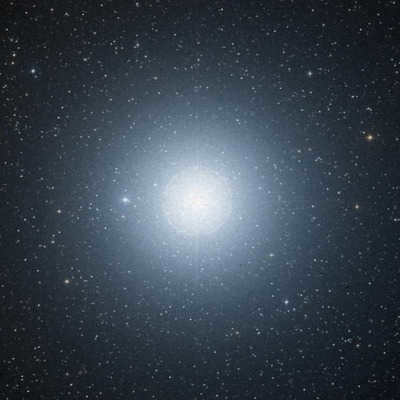
Photo: Murgor Multoface, CC0, via Wikimedia Commons
This is the Alpha star of the constellation known as Canis Minor. It is safe to say that Procyon is the star that defines this constellation. It is represented by two stars that are visible to the naked eye, the other being Gomeisa. The name of this star has an interesting origin, derived from long observations. In Greek, it literally translates to “before the dog”. In another translation, it is referred to as “the harbinger of the dog”. This is because Procyon appears in the sky 40 minutes before Sirius, the brightest star in the sky.
The celestial body is situated in close proximity to us, just 11.41 light-years away. Its size is 1.9 times that of the sun, and it shines with a brightness that is 8 times greater. Procyon is classified as a subgiant, and based on its luminosity, it can be inferred that helium fusion within its core has already ceased, initiating the expansion process of the object. Over time, the star will gradually transform into a red giant.
The constellation Canis Minor appears low on the horizon due to its equatorial position. To locate it, along with the star, one must face south, locate the belt of Orion, and draw an imaginary line towards the east from its lower luminary. Procyon, being the brightest star in its constellation, is relatively easy to locate. The optimal time for observations is during the winter months.
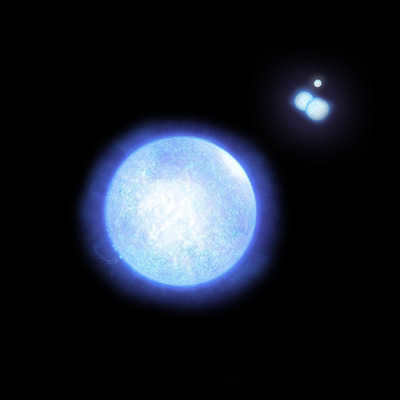
Visible magnitude: 0.12 (rms)
The star is considered to be one of the most brilliant not only in the constellation of Orion: within the observable Galaxy, Rigel has virtually no rivals. Its luminosity is incredibly powerful: the star is 85000 times brighter than the Sun. The distance to this object is as immense as its luminosity – 773 light-years. Rigel shines so intensely that it illuminates the vast expanse around it, making the dust clouds of its constellation visible.
This giant is not alone. It is a part of a system consisting of 3 stars, with 2 of them being telescopic double stars that are bound together by gravitational force. The blue-white giant is 68 times larger in diameter compared to our sun. Rigel is known for its variable brightness: there are processes occurring on its surface that cause the luminary to pulsate.
Here’s an intriguing piece of information. The luminosity of Rigel is incredibly powerful, to the point that if it were to replace the Sun, our solar system’s planets would not survive. Any object within a distance of 150 million units would instantly be vaporized by the intense and otherworldly stellar wind.
Let’s talk about Capella
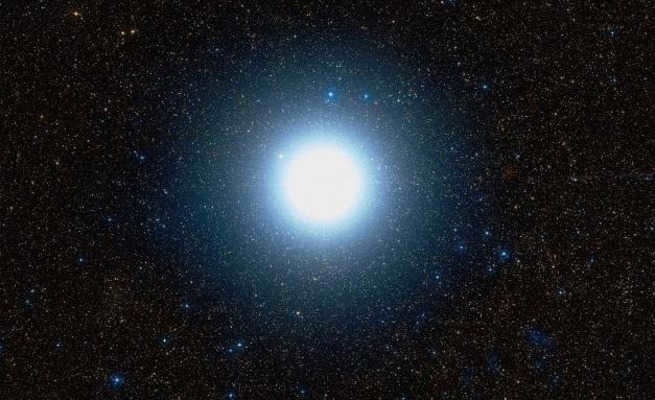

Photo: Murgor Multoface, CC0, via Wikimedia Commons
Capella is renowned for being one of the most brilliant stars visible in the night sky, ranking an impressive 6th in terms of brightness. Surpassing the luminosity of notable giants such as Aldebaran and Betelgeuse, Capella shines with a light intensity that is 77 times greater than that of the sun. Recent measurements suggest that Capella is approaching the end of its lifespan, although this event will occur relatively soon in human terms.
Capella is known as a binary star system, consisting of two equally-sized stars, Capella Aa and Capella Ab. This unique feature makes Capella easily visible without the need for special optics. In the distant past, over 240,000 years ago, Capella held the title of the brightest star in the Earth’s sky, as it came closest to our planet. However, today it is located a third farther away, causing it to appear less bright compared to other stars.
Capella Aa is classified as a red giant star, while Capella Ab is still in its evolutionary process, with thermonuclear processes completed but helium burning yet to begin. Interestingly, despite their different stages of development, both stars are estimated to be around 5.25 billion years old.
Capella, the largest and most brilliant star in the constellation of Ascendant, holds a significant place in Greek mythology. The ancient Greeks associated this celestial body with Erichthonius, the king of Athens, who was renowned for his mastery of horse harnessing. Legend has it that Erichthonius was the inventor of the first chariot. Perched on the king’s shoulder is Capella, a celestial goat. According to mythology, this goat provided nourishment to the young Zeus, who sought refuge in Crete to escape his father Cronus. In one version of the tale, the god accidentally broke off one of the goat’s horns while playing with it, causing a cascade of riches to pour forth. This horn came to be known as the cornucopia, a symbol of abundance and prosperity.
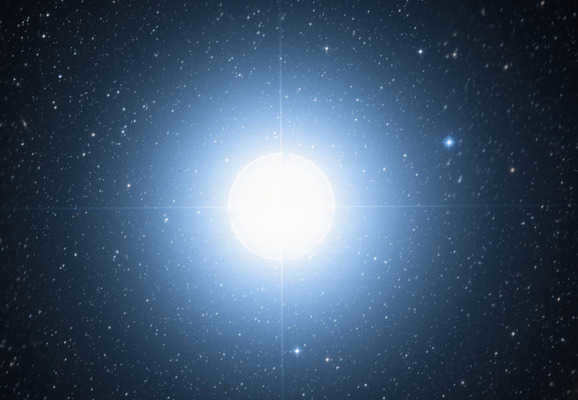
During the summer and autumn seasons, people living in the Northern Hemisphere have the opportunity to witness the magnificent Great Summer Triangle. At the top of this formation is Vega, which is known as the brightest star in the constellation Lyra. Vega is located approximately 25 light-years away from the Sun. This particular star holds great significance in the field of astrophysics, as it served as a crucial reference point in the creation of a sophisticated photometric system used to analyze the color and brightness of celestial objects.
Vega, the first star to be photographed after the Sun, was also known in the 12th century BC for pointing to the North Pole, making it a polar star. It is predicted to regain its polar status in 12000 years. The energy source of Vega is believed to be the process of thermonuclear fusion, specifically the fusion of helium from hydrogen. With a brightness 37 times greater than the Sun’s and a mass only 2 times greater, Vega is an impressive star. Due to its significant mass, Vega is expected to exist as a white giant for approximately 1 billion years, which is only 1/10th of the Sun’s lifespan. After that, it will transition into a red giant and eventually transform into a white dwarf. Researchers are currently investigating the possibility of Vega having exoplanets. So far, only a dust disk has been discovered around Vega.
Arcturus
Arcturus, also known as Alpha Boötis, is the brightest star in the constellation Boötes. It is a red giant star located approximately 36.7 light-years from Earth. Arcturus is easily identifiable in the night sky due to its distinctive orange color and its position as the fourth brightest star in the entire sky. It has a diameter that is about 25 times larger than the Sun and it shines with a luminosity that is about 170 times greater than the Sun. Arcturus is also notable for its high proper motion, which means that it moves relatively quickly across the sky. This star has been observed and studied by astronomers for centuries, and it continues to be a fascinating object of study in the field of astrophysics.
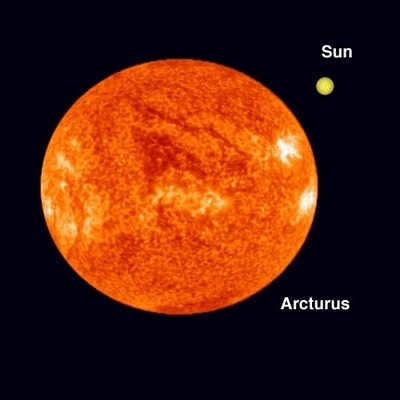
Image: Windows to the Universe and/or windows.ucar.edu/, Attribution, via Wikimedia Commons
Apparent magnitude: -0.05 (rem)
Located in the constellation of Boötes and one of the most brilliant in the sky of our planet. Arcturus is 110 times more luminous than the Sun. Its cosmic properties are also impressive: while its mass is nearly the same as the Sun, its radius is 27 times greater than that of the Sun. The object is relatively metal-poor, which contributes to its lightness.
However, the primary characteristic of Arcturus is not its brightness. Rather, it possesses the ability to alter its position in space, indicating that it possesses its own motion. In terms of the speed of its individual movement, Arcturus is only surpassed by Alpha Centauri among all the stars visible in the sky. After observing this celestial object for an extended period, astronomers made the discovery that it does not move in isolation. Instead, it is accompanied by an entire assemblage of smaller celestial bodies, numbering over 50. These stars possess a similar magnitude and speed of motion, leading to the decision to classify them as an asterism known as the Arcturus Stream.
Alpha Centauri
Alpha Centauri is the closest star system to our solar system, located about 4.37 light-years away. It is a triple star system consisting of three stars: Alpha Centauri A, Alpha Centauri B, and Proxima Centauri. Alpha Centauri A and B are binary stars that orbit each other, while Proxima Centauri is a red dwarf star that is slightly farther away from the binary pair.
Alpha Centauri is a popular target for astronomers and space exploration enthusiasts. It has been the subject of numerous scientific studies and has been visited by several space probes. The possibility of habitable planets in the Alpha Centauri system has also been a topic of much speculation and research.
The Alpha Centauri system is relatively close to our solar system, making it a potential target for future space missions. Scientists are keen to explore this star system further to learn more about the nature of exoplanets and the potential for life beyond Earth. The proximity of Alpha Centauri also makes it an ideal candidate for interstellar travel in the future.
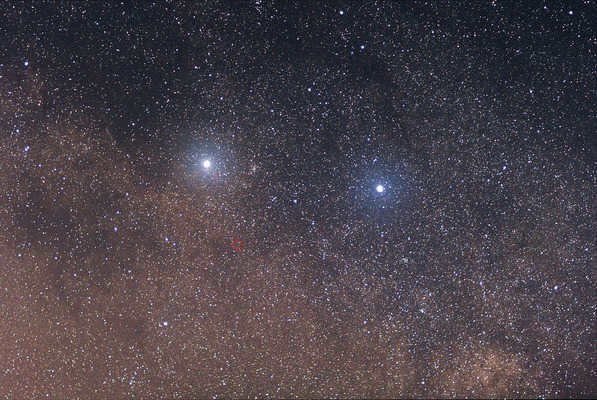
The nearest star system to our Solar System is Alpha Centauri, which is known for being bright, unique, and extensively studied. Alpha Centauri is comprised of three stars: Centauri A, Centauri B, and Proxima Centauri. This system is approximately 2 billion years older than our Sun, making it a grand total of 6 billion years old. When observed with the naked eye, it is impossible to differentiate between the first two stars as they appear as a binary system – a remarkable display of luminosity. The light emitted by Centauri A and Centauri B takes 4.3 years to reach Earth. The third star in the system is a modest red dwarf.
Although it is currently impossible to reach Alpha Centauri due to its distance, the journey aboard a state-of-the-art spacecraft would take over a million years. The stunning sight of Alpha Centauri’s radiant glow can only be witnessed by those residing in the Southern Hemisphere. This celestial body plays a crucial role in Earth’s navigation system, as it serves as a guidepost to the pole when one draws a line from Centauri B to intersect with a line originating from the Southern Cross.
The ancient Greeks added the bright star to the star atlas in the faraway 4th century BC, and it was split into two separate objects only in 1689. Proxima was found in 1915. Astronomers dedicate significant time and effort to the study of the Alpha Centauri system with the aspiration of identifying habitable planets. In 2012, it was revealed that a planet slightly bigger than Earth had been detected, circling its star at a suitable pace. However, it is excessively hot. Its location is akin to that of Mercury in our solar system.
Canopus Star
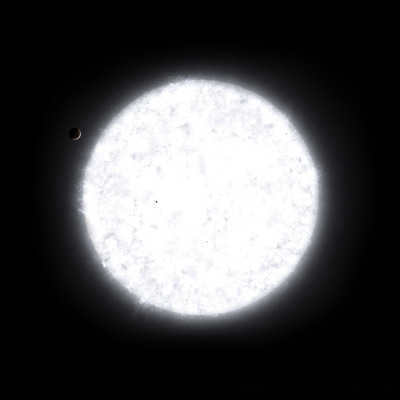
An astonishingly brilliant celestial body with a radiance that surpasses that of the Sun by a factor of 15000. This supergiant, which has a yellowish hue, is situated at a distance of 310 light years from our planet. Despite this considerable remoteness, Canopus remains highly visible in the Earth’s celestial expanse. Over the course of numerous years, this extraordinary luminary has played a significant role in the realms of history, navigation, and art. For mariners, Canopus served as an invaluable guiding star, often referred to as the “South Polar Star” due to its ability to indicate the direction of the South Pole.
Canopus is also utilized in astrocorrections: its position is employed to navigate the launch of rocket launchers. Despite being considered one of the most brilliant stars in the celestial sphere, it is not visible in all regions of the world: it only illuminates the Southern Hemisphere. Furthermore, in certain countries such as New Zealand and Australia, this celestial entity can always be seen above the horizon line.
Canopus was discovered numerous millennia ago by Arabian astronomers. References to this luminous star can predominantly be found in Indian and Egyptian texts. The name Canopus is linked to the legendary navigator who besieged Troy. Astronomers refer to this star as Alpha Carinae: it serves as the primary and brightest star in the Carina constellation.
Sirius
can be paraphrased as
The Dog Star
.
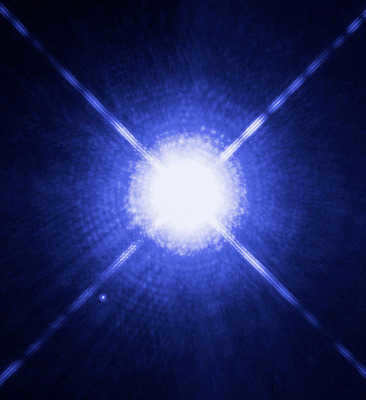
Image: NASA, ESA, H. Bond (STScI), and M. Barstow (University of Leicester), CC BY 3.0
Sirius, the most brilliant star visible in the night sky from Earth, can be found in the constellation of Canis Major, also known as the Big Dog. It is particularly prominent in the Northern Hemisphere, especially during the winter season. This star holds the distinction of being the closest to our planet, located approximately 8.6 light-years away from the sun. For amateur astronomers, Sirius is an excellent target for observation as its photo can be easily captured. However, due to its extreme brightness, photographing Sirius requires advanced skills and expertise to process the acquired data effectively.

Observing the sky is not limited to just hopeless romantics and meticulous scientists. From time to time, everyone enjoys looking up and marveling at the breathtaking beauty of our universe, especially the brilliant stars. That’s why it’s fascinating for everyone to discover which celestial bodies emit the most radiant light.
Sirius
Sirius, without question, is the most brilliant star in the nocturnal firmament. It holds the top spot in terms of luminosity. Situated within the constellation of Canis Major, it is easily discernible in the winter skies of the Northern Hemisphere. Those residing in the Southern Hemisphere, on the other hand, can catch a glimpse of it during the summer months, provided they are north of the Arctic Circle. Positioned approximately 8.6 light-years away from our Sun, Sirius stands as one of the nearest and brightest stars to our own celestial abode.
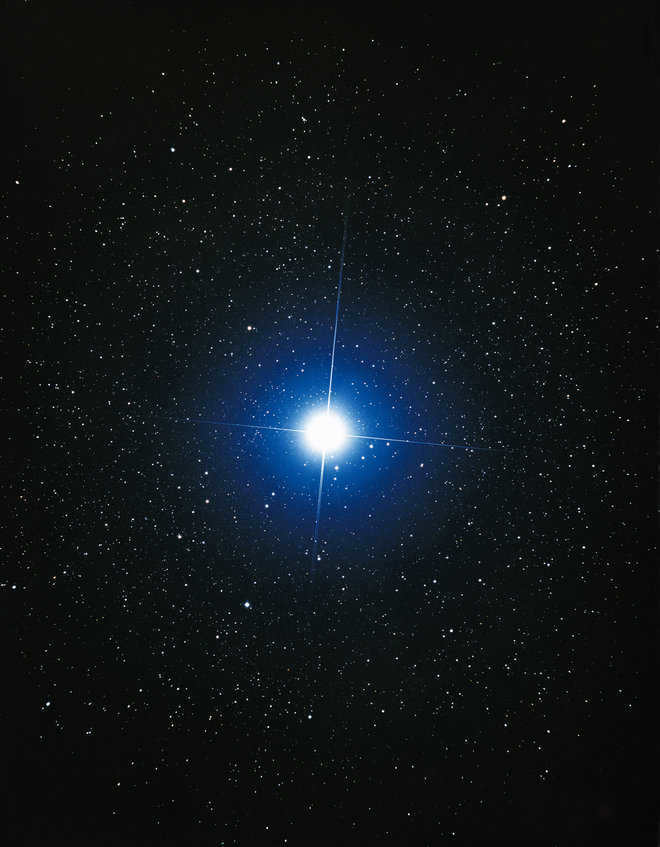
The brightness of Sirius is a result of its close proximity to our solar system. It is a popular object for amateur astronomers to observe. Sirius has a stellar magnitude of 1.46 m.
Sirius is the brightest star in the northern hemisphere. In the 19th century, astronomers noticed that although its trajectory appears to be a straight line, it actually experiences periodic fluctuations. This led astronomers to speculate that there might be another unseen celestial body orbiting around Sirius with a period of approximately 50 years. 18 years later, a small star with a magnitude of 8.4 m, classified as a white dwarf, was discovered near Sirius.
Canopus
The brightest star in the sky has been a subject of interest since ancient times, with the Greek scientist Hipparchus being one of the first to study it. He classified the stars based on their brightness into six magnitudes, with the two brightest stars, Sirius and Canopus, being of the first magnitude. Canopus, although being the second brightest star after Sirius, is not as well-known. This is mainly due to the fact that it is best observed from the Southern Hemisphere. In the northern territories, Canopus can only be seen in subtropical latitudes.
For instance, in Europe, Canopus is visible only from the southern part of Greece, and in the former Soviet Union, it can only be admired by residents of Turkmenistan. Astronomers in Australia and New Zealand have the best luck in observing Canopus as it is visible throughout the year in these regions.
At present, Canopus is a white supergiant star situated at a significant distance away from our planet – approximately 310 light years, which is equivalent to 2.96 quadrillion kilometers.
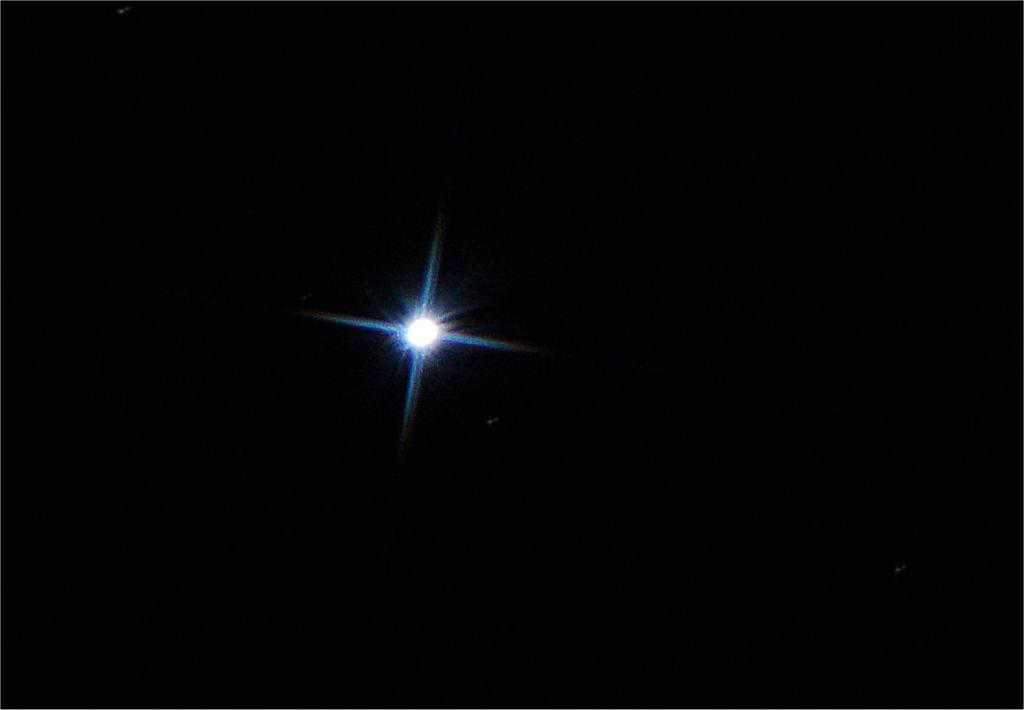
Vega
When you gaze at the night sky during warm summer nights, you can witness a vibrant bluish-white speck of light. This celestial body is none other than Vega, which holds the distinction of being one of the most brilliant stars in the entire sky. It can only be observed in the Northern Hemisphere.
Not only is Vega the primary star in the Lyra constellation, it also serves as the prominent luminary throughout the summer season. Its strategic location makes it incredibly easy to spot from the Northern Hemisphere. From late spring to mid-autumn, Vega stands out as the most visible celestial object in the night sky.
Like many other celestial bodies, Vega is surrounded by numerous ancient stories and myths. For instance, in the Far East, there is a captivating legend that depicts Vega as a queen who fell deeply in love with a humble man, symbolized by the star Altair. Unfortunately, upon discovering their forbidden love affair, the girl’s father became enraged and forbade her from seeing the mortal. As a result, Vega and Altair find themselves separated by the hazy expanse of the Milky Way. However, according to the legend, once a year, a thousand and forty magpies form a celestial bridge with their wings, providing the lovers with a fleeting opportunity to reunite. Additionally, the legend explains the annual meteor shower from the Perseid stream as the tears of the princess falling to the earth.

Vega is twice the mass of the Sun. It shines with a luminosity 37 times greater than that of the Sun. Due to its immense size, Vega will remain in its current white star state for another billion years.
Arcturus
Arcturus is among the most brilliant stars visible from nearly anywhere on Earth. It ranks second in brightness only to Sirius, Canopus, and the binary star Alpha Centauri. The star shines 110 times brighter than the Sun and can be found in the constellation Volopassus.
Arcturus got its name from the Big Dipper constellation. In ancient Greek, the word “arcturus” translates to “guardian of the bear”. According to legend, Zeus assigned Arcturus to watch over the nymph Callisto, who was transformed into a bear by the goddess Hera. In Arabic, Arcturus is known as Haris-as-sama, which means “guardian of the heavens”.
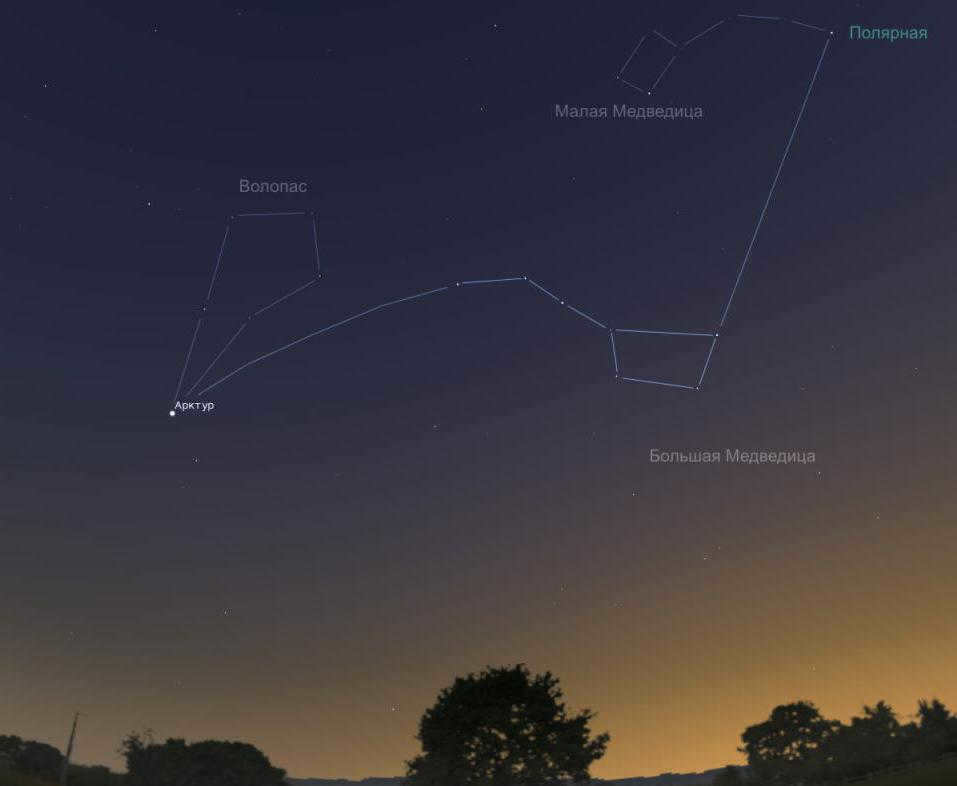
Throughout the year, Arcturus can be observed in the sky in the northern latitudes.
Alpha Centauri
Alpha Centauri is another one of the most brilliant stars that have been known to astronomers since ancient times. It is part of the Centaurus constellation. However, in reality, it is not a single star – it consists of three components: the luminaries Centaurus A (also known as Toliman), Centaurus B, and the red dwarf Proxima Centauri.
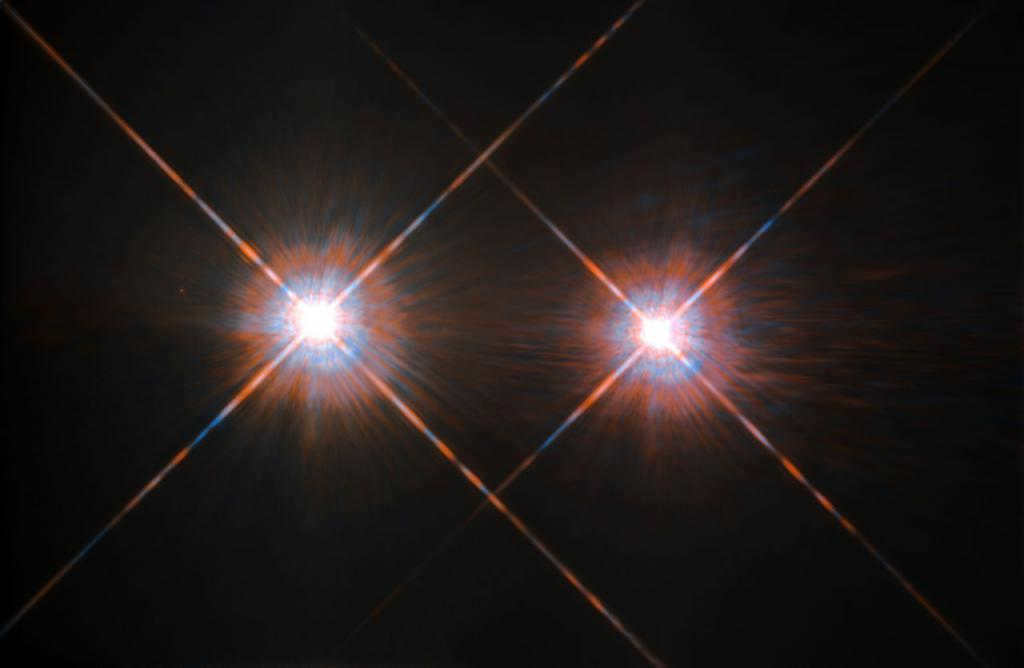
Alpha Centauri, which is depicted in the image above, is more than 2 billion years older than our Solar System. This cluster of stars is approximately 6 billion years old, while the Sun, which is part of our Solar System, is only 4.5 billion years old. The similarities between the characteristics of Alpha Centauri and our Sun are remarkable.
Without special equipment, it is impossible to distinguish the luminosity of stars A and B in Alpha Centauri, which is why they appear to have an impressive combined glow. However, with the use of a regular telescope, the small distance between these two celestial bodies becomes noticeable. The light emitted by these stars takes approximately 4.3 years to reach Earth. Despite this, it would still take approximately 1.1 million years to reach Alpha Centauri in a modern spacecraft, making it unlikely to be feasible in the near future. During the summer months, the luminaries of Alpha Centauri can be observed in regions such as Florida, Texas, and Mexico.
This celestial body falls into the classification of red supergiants. Betelgeuse, also known as Alpha Orionis, possesses a mass ranging from 13 to 17 times that of the Sun, and its radius measures 1200 times that of our very own star.
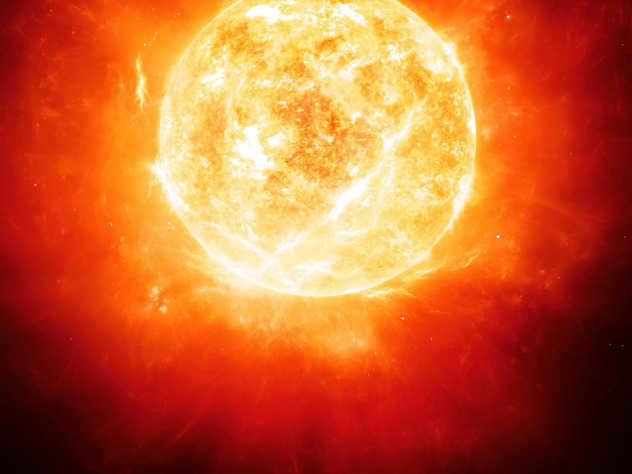
One of the most brilliant stars that can be seen in the night sky is Betelgeuse. Located 530 light years away from our planet, it shines with a luminosity that is 140,000 times greater than that of the Sun.
This particular red supergiant is not only one of the largest stars, but also one of the brightest ones in existence. If Betelgeuse were to take the place of our Sun, its enormous size would engulf several planets, including Mercury, Venus, Earth, and Mars. With an estimated age of only 10 million years, Betelgeuse is currently in the later stages of its life cycle, and scientists predict that within the next few million years, it will explode and transform into a supernova.
Procyon
Procyon, also known as Alpha Canis Minoris, is a binary star system located in the constellation Canis Minor. It is one of the brightest stars in the night sky and is visible from both hemispheres. Procyon is approximately 11.46 light-years away from Earth and has a visual magnitude of 0.34. It consists of two stars, Procyon A and Procyon B, with Procyon A being the brighter of the two. Procyon A is a main sequence star similar in size and mass to our Sun, while Procyon B is a white dwarf. The two stars orbit each other with a period of about 41 years. Procyon is also known for its high proper motion, meaning it moves relatively quickly across the sky compared to other stars. Overall, Procyon is a fascinating celestial object that has intrigued astronomers for centuries.
Procyon, which is the alpha star of the Lesser Dog, is renowned for being one of the brightest stars in the sky. Interestingly, Procyon is not just a single luminary, but actually consists of two stars, the other one being called Gomeisa. What makes Procyon even more fascinating is the etymology behind its name. The name itself is derived from a careful observation of the night sky, with its literal translation meaning “before the Dog”. A more poetic interpretation of the name would be “harbinger of the dog”. In Arab cultures, Procyon was often referred to as “Sirius the tear-shedding Sirius”, due to its close association with the revered Sirius star, which was worshipped by ancient civilizations. It is no wonder that astronomers and priests eventually identified Procyon as a precursor to Sirius, as it appears in the sky approximately 40 minutes earlier, almost as if it is racing ahead. If you were to visualize the constellation of the Lesser Dog, you would find Procyon situated in its hind legs.
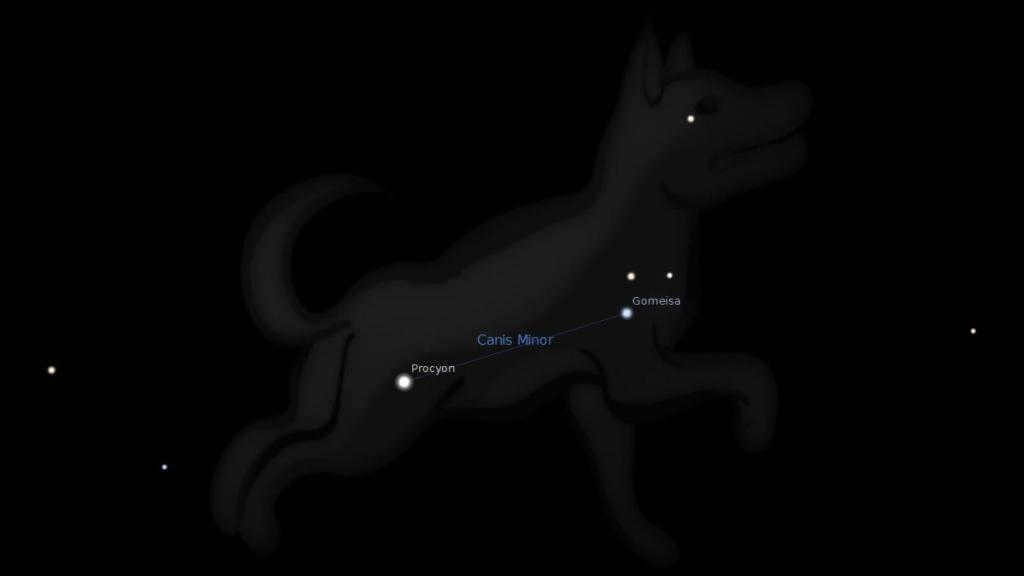
The star is positioned in close proximity to Earth – naturally, this distance can be considered insignificant only in terms of the cosmos. It is situated 11.41 light years away from our planet. It is hurtling towards the Solar System at an astounding velocity of 4500 meters per second. Procyon radiates light equivalent to that of 8 of our Sun, and its radius measures no less than 1.9 times the radius of our own star.
Astronomers classify it as a subgiant star. Based on the luminosity of its glow, scientists have deduced that the nuclear fusion reaction between hydrogen and helium in its core has ceased. Researchers are confident that the star’s expansion process has already commenced. After an extensive period of time, Procyon will transform into a red giant.
Polaris, also known as the North Star, is the most brilliant star in the constellation Ursa Major, commonly referred to as the Big Dipper.
This celestial body is particularly remarkable for its close proximity to the North Pole of our planet. As a result of the Earth’s daily rotation, the other stars appear to revolve around Polaris, making it an important navigational guide for travelers. Conversely, the South Pole lacks a comparable guiding star. In ancient times, the axis of the Earth pointed towards a different region of the sky, and the position of the North Star was occupied by Vega.
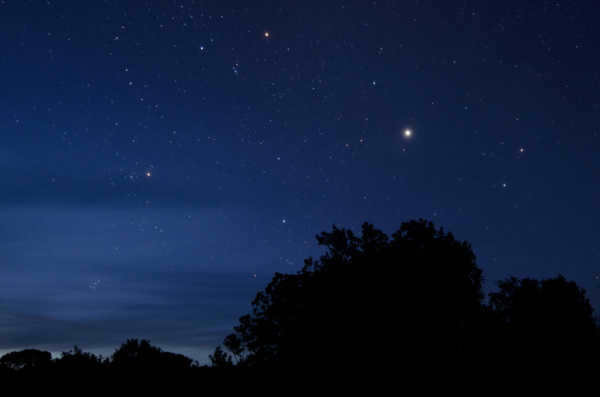
For those curious about the identity of the brightest star visible from the Northern Hemisphere, it is important to note that Polaris does not hold that title. However, locating Polaris is quite simple by extending the line connecting the two brightest stars of the Big Dipper. Polaris can be found at the end of the handle of the neighboring constellation, Ursa Minor. It is also the brightest star in this constellation.
The Big Dipper is also a subject of interest for astronomers due to its distinct shape, resembling a bucket, which makes it easily recognizable in the night sky. The brightest star in the Big Dipper constellation is Alioth, designated as epsilon in reference books, and it ranks as the 31st brightest visible star among all.
In today’s world, just like in the era of ancient stargazers, regular individuals have the opportunity to observe the stars from the Earth’s surface. Nevertheless, it is highly likely that our future generations will have the ability to venture to the most brilliant celestial bodies and discover even more captivating and enjoyable knowledge about them.

- The Brightest Stars
Approximately 120 years before Christ, the Greek astronomer Hipparchus (Hipparchus) compiled the original star catalog that is known today. While this document has not survived through the ages, it is believed that Hipparchus’ list contained around 850 stars.
He documented the stars visible in each constellation known during his time, meticulously detailing the precise location of each celestial object, and ranking them based on a brightness scale ranging from 1 to 6, with 1 representing the highest level of brightness (or “stellar magnitude”).
This method of measuring brightness continues to be utilized in modern times.
With the development of more precise instruments for measuring light, astronomers made the decision to utilize decimal fractions – like 2.75m – to denote stellar magnitudes instead of simply stating the magnitude with the numbers 2 or 3.
Typically, when astronomers discuss stellar magnitudes, they are referring to “the apparent stellar magnitude“. In such instances, a lowercase Latin letter m is appended to the numerical value – for example, 3.24m.
This represents a measurement of the star’s brightness as observed from Earth, without considering the presence of an atmosphere, which can influence the view.
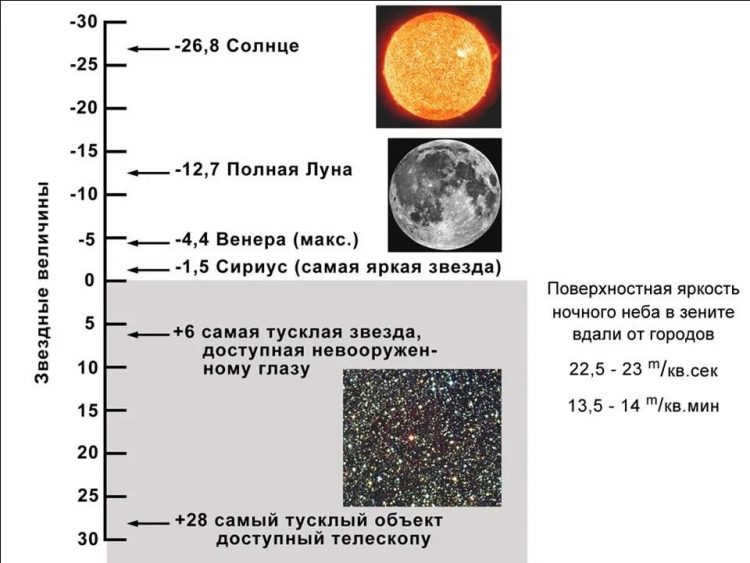
Presently, we have knowledge of stars with a stellar magnitude brighter than 1m. For instance, Vega, which is the most brilliant star in the constellation Lyra, has an apparent stellar magnitude of 0. Any star that shines brighter than Vega will have a negative stellar magnitude. For example, Sirius, the brightest star in our night sky, has an apparent magnitude of -1.46m.
Note: Astronomy also utilizes absolute stellar magnitude, which determines the luminous intensity of a star without considering adjustments for distance or other factors.
The following list presents the brightest stars that can be observed from Earth in the optical range by apparent stellar magnitude. In the case of multiple stars, the total stellar magnitude is provided.
| Number | Title | Light-years | Magnitude | Hemisphere |
| 1 | Sirius (α of the Big Dog) | 8.6 | -1.46 | Southern |
| 2 | Canopus (α of Kiel) | 310 | -0.72 | South |
| 3 | Toliman (α Centauri) | 4.3 | -0.27 | South |
| 4 | Arcturus (α Volopassus) | 36.7 | -0.05 | North |
| 5 | Vega (α Lyra) | 25 | 0.03 | North |
| 6 | Capella (α Ascendant) | 42.2 | 0.08 | North |
| 7 | Rigel (β Orion) | 870 | 0.12 | South |
| 8 | Procyon (α of the Lesser Dog) | 11.4 | 0.38 | North |
| 9 | Ahernar (α of Eridanus) | 139 | 0.46 | South |
| 10 | Ahernar (α Eridanus) | 139 | 0.46 | North |
Let’s proceed to a more comprehensive explanation of the top ten most luminous stars in the celestial sphere, arranged in descending order of brightness.
1. Sirius (α of the Canis Major)
The renowned “canine star” (which is why J. Rowling named her protagonist who transformed into a dog), whose appearance in the sky signaled to ancient students the start of their vacation (the term “dog days” refers to this) – one of the nearest stars to the solar system, hence easily observable from nearly any location on Earth, except for the Far North.
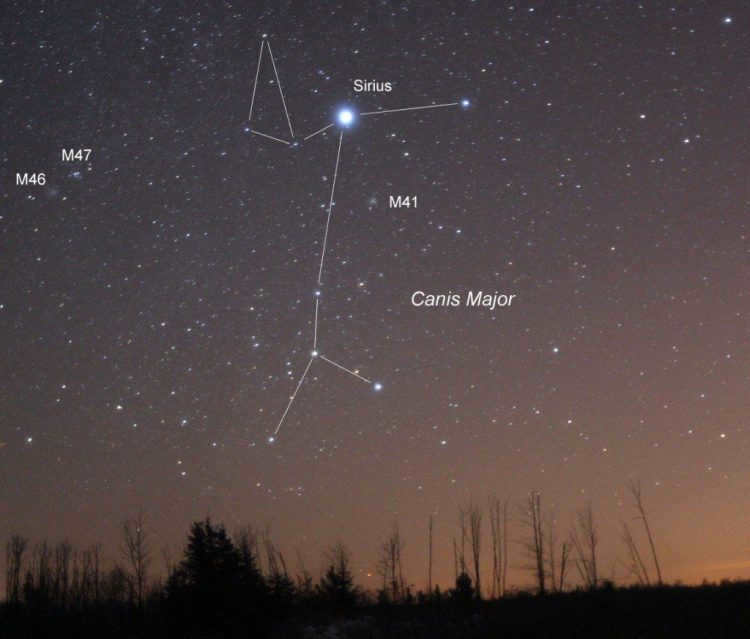
Currently, there is a belief that Sirius is a binary star system. Sirius A, which is twice the size of the Sun, is accompanied by the smaller Sirius B. However, it is said that millions of years ago, the sizes of these stars were reversed.
Throughout history, various nations have associated different legends with Sirius. The Egyptians believed it to be the star of Isis, while the Greeks associated it with the constellation Orion, often depicted as a hunting dog. The Romans referred to it as Canicula, which means “little dog” in Latin. In Old Russian, it was called Psitsa.
In ancient times, Sirius was described as a red star, but today we observe it as having a bluish glow. Scientists explain this difference by suggesting that the ancient descriptions were based on observations of Sirius when it was low on the horizon, causing its color to be distorted by atmospheric effects such as water vapor.
Nevertheless, Sirius currently holds the title of being the most brilliant celestial body visible to the naked eye in our sky, even in daylight!
Due to its superior ability to penetrate the lower atmosphere, Sirius frequently sparkles, distinguishing it from other stars. Situated a mere 8.6 light-years away, this Class A star boasts twice the mass and 25 times the luminosity of our Sun.
Locating the celestial body Sirius in the heavens
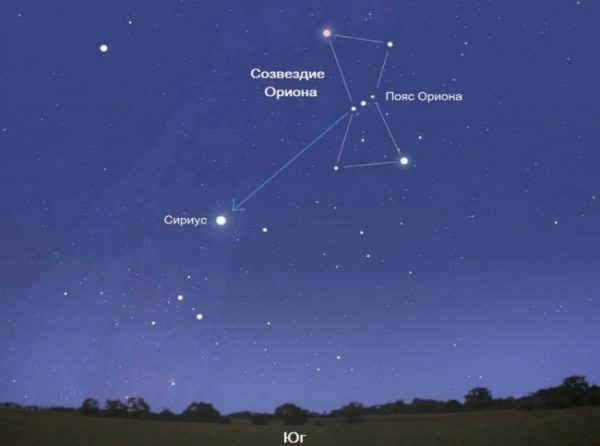
The optimal period for observing Sirius is during the winter season (for observers in the northern hemisphere), as the celestial body known as the Dog Star becomes visible relatively early in the evening sky. In order to locate Sirius, one can utilize the constellation Orion as a point of reference, specifically focusing on its three prominent belt stars. By drawing an imaginary line inclined at a 20-degree angle towards the southeast starting from the leftmost star of Orion’s belt, one can easily pinpoint the position of Sirius.
To simplify the process of measuring the distance, individuals can employ their own fist as a makeshift tool. When held at arm’s length, the span covered by a closed fist is approximately equivalent to 10 degrees of the celestial sphere. Therefore, locating Sirius would require an approximation of two fist-widths.
2. Canopus (α Kiel)
Canopus, also known as α Kiel, is an incredibly bright supergiant star that shines 15,000 times brighter than the Sun. Despite being located 310 light-years away, it holds the title of the second brightest star in the night sky.
When it comes to absolute luminosity, Canopus surpasses even Sirius, which is much closer to Earth but appears dimmer due to its distance.
In modern times, Canopus plays a crucial role in spacecraft navigation, serving as a reference point in outer space. Notable examples include the Soviet interplanetary stations and Voyager 2.
Canopus belongs to the yellow-white F-class supergiant category, with a temperature ranging from 5,500 to 7,800 degrees Celsius. Having depleted its hydrogen reserves, the star is currently undergoing a process of converting its helium core into carbon. This transformation has caused Canopus to expand significantly, making it 65 times larger than the Sun.
Locating Canopus in the celestial sphere
Canopus, with its apparent stellar magnitude of -0.72m, is a relatively simple star to locate amidst the vast expanse of the night sky. However, its visibility is limited to latitudes south of 37 degrees in the northern hemisphere. Positioned approximately 40 degrees north of Sirius (refer to the instructions above for locating Sirius), Canopus stands as a prominent celestial object in our nocturnal vista.
3. Toliman (α Centauri).
It is an interesting celestial object consisting of a double star system, or more accurately, a triple star system. When we observe it, we perceive two stars as a single entity, while the third, less luminous star, known as Proxima, appears to be distinct from the others. Despite their relatively modest brightness, these stars are relatively close to our own solar system.
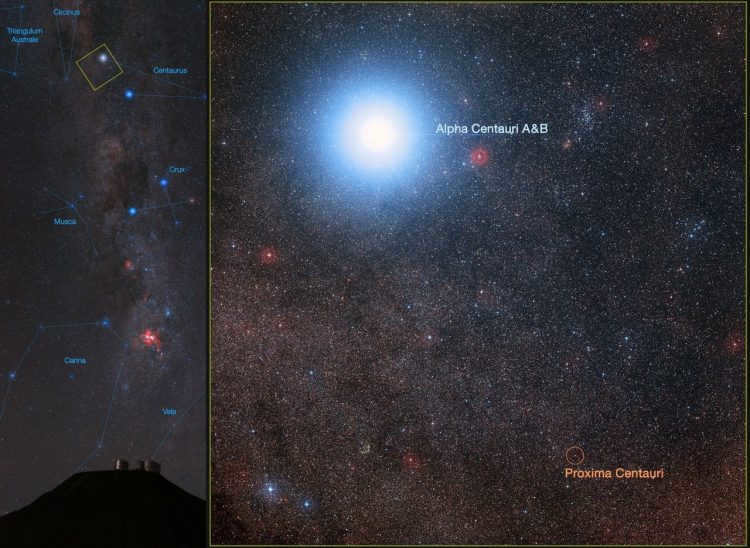
Astronomers have been actively searching for an Earth-like planet near Toliman, which bears some resemblance to the Sun, at a distance that would support life. Furthermore, this system is relatively close, making it a likely destination for the first interstellar flight.
Renowned science fiction authors such as Stanislav Lem (creator of the iconic “Solaris”), Asimov, and Heinlein have dedicated pages of their books to this system. The system of Alpha Centauri also serves as the setting for the sensational movie “Avatar”.
During clear summer nights, you can spot the Alpha Centauri system in the night sky with a star magnitude index of -0.27m. However, for the best observation of this unique three-star system, it is recommended to be in the southern hemisphere of the Earth, starting from the 28th degree of northern latitude and further south.
Locating the star Toliman in the sky
The Alpha Centauri system is situated at the lower part of the Centauri constellation. Another way to locate this three-star system is by finding the Southern Cross constellation in the night sky, then mentally extending the horizontal line of the cross towards the west. You will first come across the star Hadar, and a little further away, Alpha Centauri will shine brightly.
Positioned between Procyon and Capella on the evolutionary scale, this orange giant star shines the brightest in the northern hemisphere. It can be easily located by following the handle of the Big Dipper. Situated just 37 light-years away, it is surpassed in brightness by only three stars, all of which are found in the southern hemisphere.
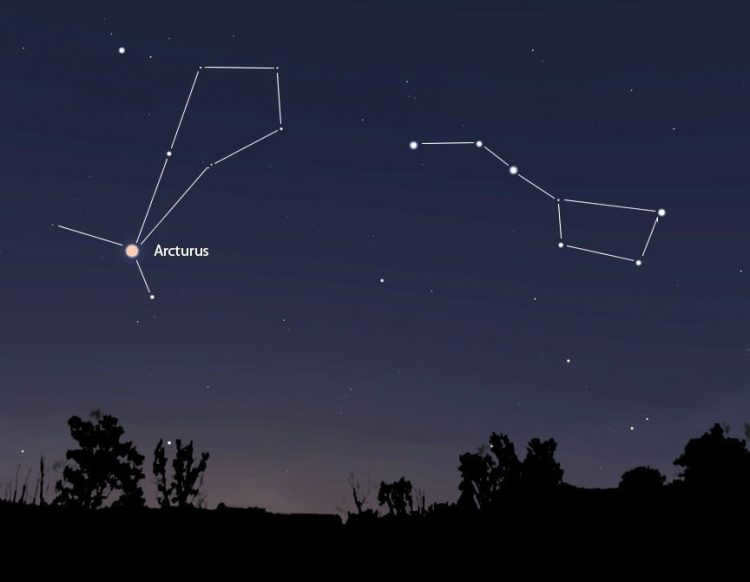
Arcturus, located in the constellation Bootes, is significantly brighter than our Sun. In fact, it is several times brighter – about a hundred times – when considering the range visible to the human eye, and even brighter – about 180 times – when taking into account the overall intensity of its luminescence. This orange giant star has a unique spectrum that sets it apart from other stars. Interestingly, scientists believe that our Sun will eventually go through a similar stage of evolution as Arcturus.
Scientists have proposed an intriguing theory that Arcturus and its neighboring stars, collectively known as the Arcturus Stream, were once part of another galaxy that was captured by the Milky Way. This means that these stars have an extragalactic origin, adding to their fascinating nature.
Finding Arcturus in the night sky
Arcturus, the brightest star in the spring constellation Volopas, can be easily located by first identifying the Big Dipper (also known as the Plough). From the Big Dipper, imagine an imaginary line extending from the handle and you will eventually spot a vibrant orange star. This star is Arcturus, which is part of a larger group of stars that form the shape of a kite.
5. Vega (α Lyra)
The term Vega is derived from the Arabic language, denoting a “majestic eagle” or a “majestic bird of prey” in the Russian language.
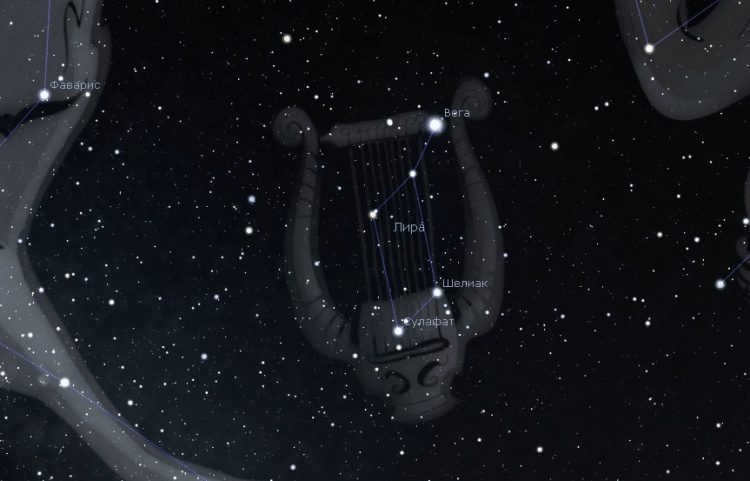
Vega is a dwarf star that burns hydrogen. It is 54 times brighter than our Sun, but only 1.5 times more massive. Vega is located 25 light-years away from the Sun, which is considered relatively close in cosmic terms. It is classified as a main-sequence star and is known to be one of the brightest A-class stars. Additionally, Vega is quite young, with an age of only 400-500 million years.
Vega holds the distinction of being the first star to ever be photographed. The historic event occurred on July 16, 1850, with an astronomer from Harvard University capturing the image.
Vega rotates at an incredibly high speed, spinning 137 times faster than the Sun and almost as fast as Ahernar. As a result, the star’s temperature and color vary between the equator and the poles. Currently, we observe Vega from the pole, causing it to appear a pale blue color to us.
Finding the bright star Vega in the night sky
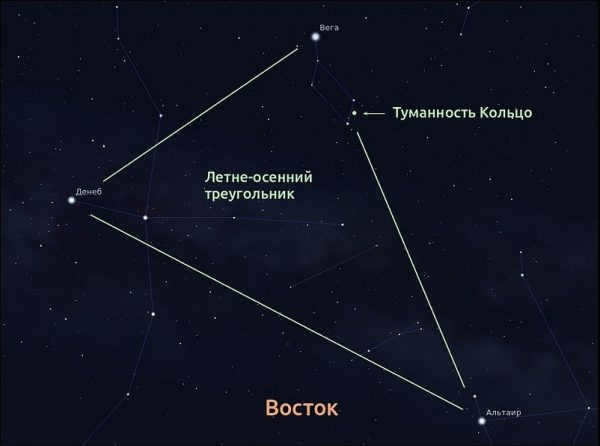
Vega, the second brightest star in the northern hemisphere, can be easily located in the night sky. To find Vega, one can start by looking for the Summer Triangle asterism. This area is perfect for observing with a telescope on warm, clear summer nights.
In Russia, as June begins, the “Summer Triangle” becomes visible in the southeastern sky during twilight. Vega is located at the upper right corner of the triangle, Deneb at the upper left, and Altair shines below.
Capella, the third brightest star in the Northern Hemisphere, is the star closest to the North Pole among the first magnitude stars (Polaris, the famous second magnitude star, is only second in line).
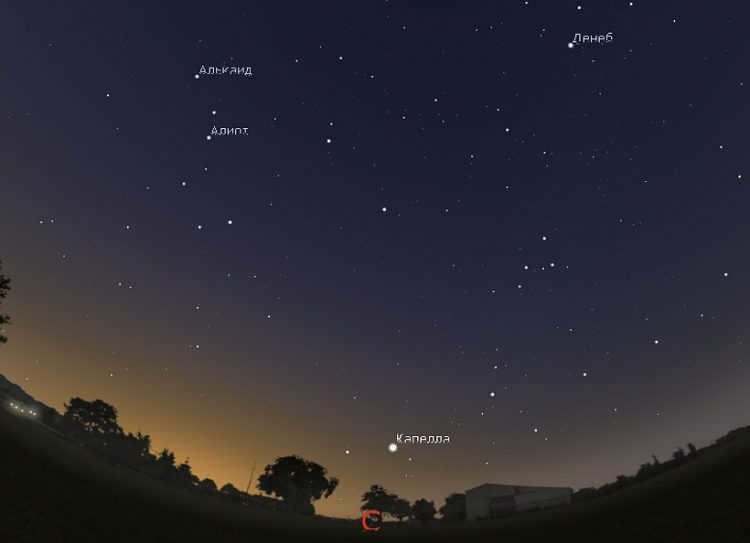
Currently, it is known that Capella is an extraordinary system consisting of four stars. This system is made up of two G-class yellow giants that are similar to each other, and another pair of red dwarf stars that are much dimmer.
The first yellow giant, named Aa, is incredibly bright, being 80 times brighter than our Sun and almost three times more massive. The second yellow giant, known as Ab, is also quite bright, being 50 times brighter than the Sun and 2.5 times heavier. When you combine the luminosity of these two yellow giants, they are an astonishing 130 times brighter than our Sun.
Locating the star Capella in the celestial sphere
By mentally tracing a straight line connecting the top two stars that form the iconic shape of the Big Dipper constellation, you will inevitably encounter the brilliant star Capella, which is part of the irregular pentagon that makes up the Ascendant constellation.
For instance, if you find yourself at a latitude of 44 degrees north (Pyatigorsk, Russia) or even farther north, you will have the opportunity to observe Capella throughout the entire night, as it never dips below the horizon at these latitudes.
7. Rigel (β Orion)
Ranking in seventh position in terms of relative brightness, Rigel (β Orion) is classified as one of the most formidable stars in the Universe, boasting an absolute magnitude of -7. This makes it the brightest among the stars that are situated in close proximity to us.
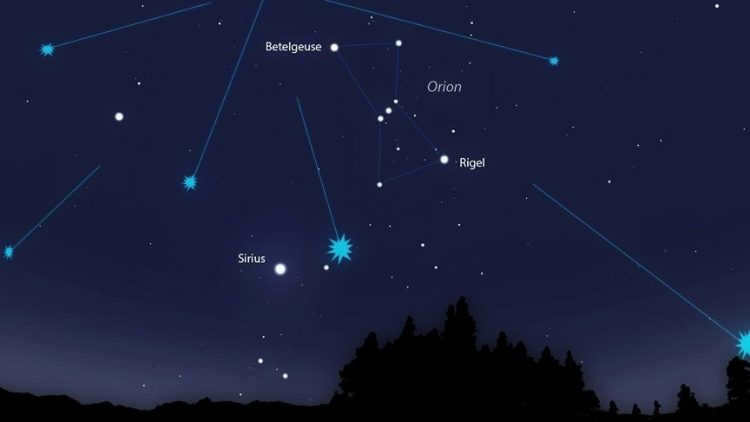
Located 860 light years away, Rigel is an extraordinary celestial body. With a scorching temperature of 12,000 degrees, this star stands out as a rare blue supergiant, not conforming to the typical main-sequence star category. In fact, Rigel is a staggering 130,000 times brighter than our own Sun and possesses a diameter 74 times larger!
The extreme temperature on Rigel is so intense that if an object were to exist at the same distance from it as the Earth is from the Sun, said object would swiftly transform into a stellar wind.
In addition to its remarkable characteristics, Rigel is accompanied by two companion stars, which are barely discernible amidst the dazzling radiance of this blue-white supergiant. It is highly probable that Rigel will eventually undergo a supernova event, flooding our galaxy with the awe-inspiring brilliance of its explosion. On the other hand, there is also the possibility that Rigel may evolve into a rare oxygen-neon white dwarf.
Locating the Rigel star in the night sky
To begin with, you must locate the Orion constellation (visible from all over Russia). It is among the most easily identifiable constellations (second only to the Big Dipper in terms of popularity). The Rigel star can be found shining brightly in the lower left portion of the constellation.
8. Procyon (α of the Lesser Dog).
Procyon, also known as the α of the Lesser Dog, is one of the two “dog stars” that shares similarities with Sirius. It holds the distinction of being the brightest star in the constellation of the Little Dog, just as Sirius is the brightest star in the Big Dog. Additionally, Procyon is also a double star.
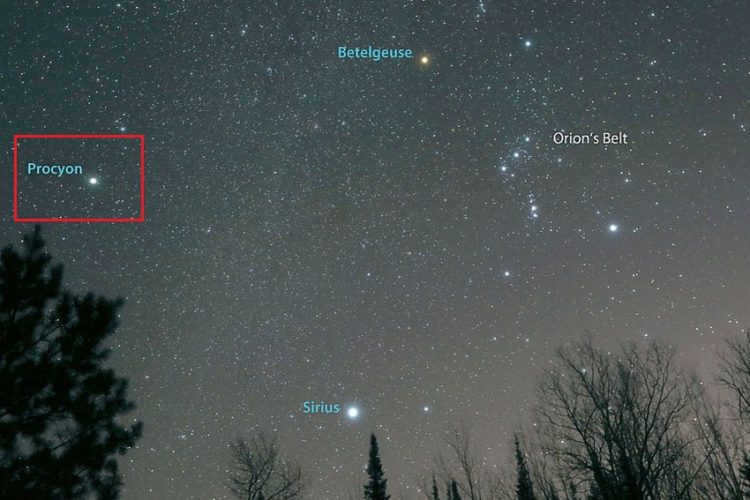
Procyon A, a star that shines with a pale yellow hue, is roughly the same size as our Sun. Over the course of millions of 10 years, it is gradually expanding and is expected to transform into an orange or red giant. Scientists have observed that this transformation has already begun, as evidenced by the star’s unprecedented brightness. Procyon A is over 7 times brighter than our Sun, despite having a similar magnitude and spectrum.
Accompanying Procyon A is Procyon B, a faint white dwarf located at a distance similar to that between Uranus and the Sun.
However, Procyon is not without its enigmas. A decade ago, astronomers conducted an extensive study of the star using a telescope in orbit. They hoped to find evidence supporting their hypotheses, but unfortunately, their expectations were not met. Now, scientists are grappling with the task of explaining the phenomena occurring on Procyon through alternative means.
To start, we can locate the well-known constellation Orion. Within this constellation, in the upper left corner, we find the star Betelgeuse (also featured in our ranking). By mentally drawing a straight line from Betelgeuse in a westerly direction, you will undoubtedly encounter Procyon.
9. Ahernar (α Eridanus).
Ahernar, which means “the end of the river” in Arabic, appropriately represents its location as the southernmost point of the constellation Eridanus, named after the Greek mythological river.
Ahernar holds the distinction of being the hottest star in our Top 10 list, with temperatures ranging from 13 to 19 thousand degrees Celsius.
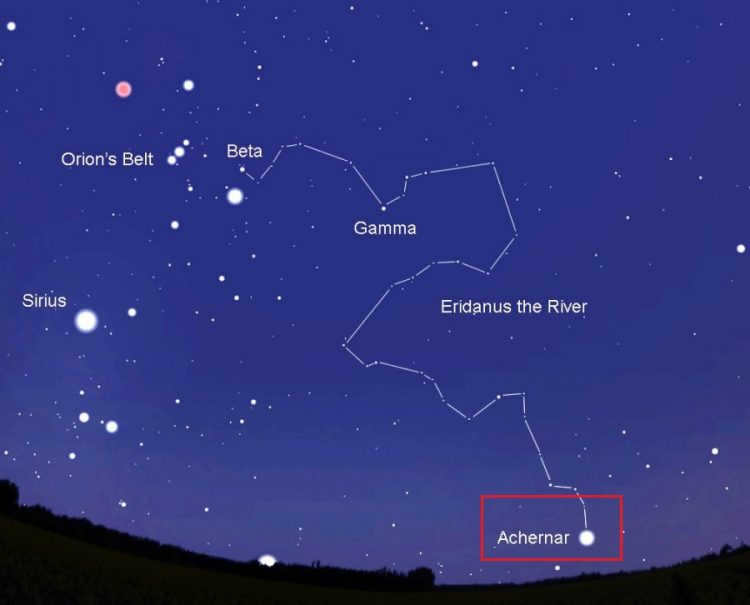
An extremely luminous celestial object, this star possesses a mass that is seven times greater than that of the Sun and emits light that is 3,000 times more intense. It stands out as one of the fastest rotating stars that has been discovered thus far! Its high rate of rotation causes its equatorial radius to expand by 56% compared to its polar radius, and the temperature at its pole is elevated by 10,000 K due to its proximity to the core. However, it is situated at a considerable distance from us, 139 light-years away.
In the vicinity of Ahernar, it is possible to observe a luminous shell composed of stellar matter, specifically plasma and glowing gas. Additionally, Alpha Eridanus exhibits a highly peculiar orbit. By the way, Ahernar is a binary star system.
Finding Ahernar in the Night Sky
Ahernar, a star of great significance, can only be spotted in the Southern Hemisphere. Unfortunately, this celestial beauty remains hidden from view in the vast territory of Russia. To catch a glimpse of Ahernar, one must venture south of the 25th degree of Northern latitude. To locate this stellar marvel, simply visualize a straight line extending towards the south, passing through the stars Betelgeuse and Rigel. It is at the end of this imaginary trajectory that you will be rewarded with the brilliant presence of Ahernar.
10. Betelgeuse (α Orion)
This celestial body, with a mass 17 times that of the sun, completes the list of the ten most luminous stars visible at night. The name Betelgeuse originates from the Arabic term for “armpit of the hunter.”
Betelgeuse stands out as one of the most enigmatic stars in the cosmos, as it possesses the ability to alter its dimensions while maintaining a constant density. The hue and luminosity of this colossal entity can fluctuate from one location to another.
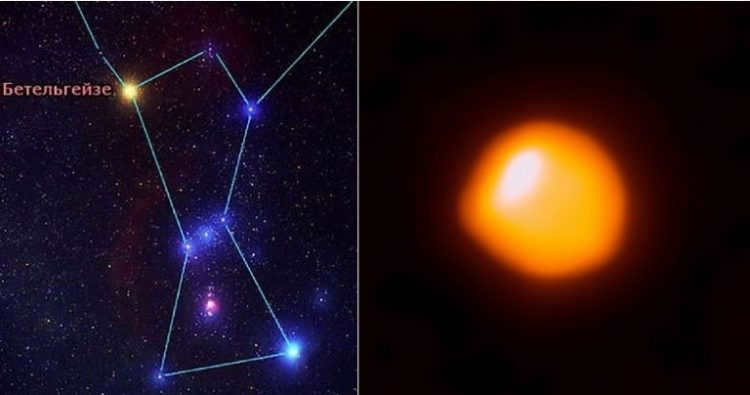
Betelgeuse, located in the constellation of Orion, used to be a brilliant and hot O-class star until it depleted its hydrogen reserves and transitioned to helium. Despite its relatively low temperature of 3500 K, it is over 100,000 times more luminous than the Sun, making it one of the top ten brightest stars despite being situated 600 light years away.
If we were to imagine Betelgeuse as our own Sun, its immense size would engulf everything up to the orbit of Mars!
Scientists predict that Betelgeuse will eventually undergo a cataclysmic explosion, but due to its significant distance from Earth (estimated to be around 500 light years by some scientists and 640 light years by others), the event should not have any direct impact on us. However, during this astronomical event, the star may remain visible in the sky even during daylight hours for a few months.
Initially, it is necessary to locate the Orion constellation (which can be observed throughout the entire territory of Russia). Similar to the other stars in the constellation, Betelgeuse can be seen in the evening sky from December to March in the southern region. Direct your attention towards the upper portion of Orion’s belt (a collection of three closely positioned stars) to spot the most radiant star situated in the corner of the constellation – this particular star is known as Betelgeuse.

